
REPORT 2024-25



REPORT 2024-25

The Goldfields-Esperance Development Commission acknowledges the traditional custodians throughout the Goldfields-Esperance region and their continuing connection to the land, waters and community. We pay our respects to members of Aboriginal communities and their cultures, and to Elders both past and present.
For thousands of years,Aboriginal and Torres Strait Islander peoples have welcomed visitors to their Country as part of their cultural practices.
The Welcome which serves to give permission to the visitors to be on their Country, is delivered through spoken language, song, dance, and at times a smoking ceremony. Adopting the practice of a Welcome to Country by Traditional Owners or custodians of the land, or an Acknowledgement of Country by non-Aboriginal or non-custodians of the land, demonstrates our recognition of Aboriginal and Torres Strait Islander peoples as the first peoples of this land and our commitment to culturally safe and inclusive ways of working. As a continuation of GEDC's commitment to our reconciliation journey, we have ourAcknowledgement to Country currently translated into ten of the 17Aboriginal languages of our region.
The GEDC thank the Goldfields Aboriginal Language Centre and the language custodians for their contribution to this resource. Locations of languages are approximate and may not be based on traditional locations.
MARTU WANGKA
Ngurra lampaju kulinyila Nga Goldfields-pa kamu Esperance-pa Development Commission-lu kulinyi ngurra waljajarra pararra Goldfieldspakamu Esperance wana nyuntutinyi kurnu parna kapi kamu ngurra walja. Ngayutinyipa kuntala kanyininyi parlparriku Martuku ngurra kamu kuruwarri kamu jilpi tuju juljujarnu kamu yungunku.
TJUPAN
GEDC-tula yurrulykula yilta ngaarla parnajanu. GoldfieldsEsperance region mantangkaya nyinanyi kapi, ngurra, parnaya kanyinyi. Respect-pala nintilku yiltajanalarti, Tjukurrpala janampa respect-amulku. Elders-tila respect nintilku, elders kuwarrija, elders-jaya yanu wantingu nganananya.
NGADJU
Ngadjungarra ngurra nguntu wamurti. Goldfields-Esperance Development Commission-nya ngadjungarra nguntu tartinyirri matayi wamurti pana katajala Goldfields-Esperance region mathulu tjukurrpa munjanguu pana, kapi and mathalu. Ngadjungarra nguntu tartiny matayi pana, tartiny ngaringin matayi yungarnkin matayi.
MADUWONGGA
Ruukulinu Ngurra Nangana The Goldfields-Esperance Development Commission ruukulinu ngurra kapi nangana nurraku, nurrapirni ngurra yungkarra nyinannyinangku mirrirringku nurra jirtu tawarra nyinannyinan. Ngalipaka The Goldfields-Esperance Development Commission pukurlpa wangkatjapirni jirtu yamatjirrin nyalpapirni, kaparlipirni tana kuwarri nyinan, tana pawurtu.
Perth
Goldfields-Kepa Kurl djandjoo koorliny. Birdiya kaditjidjiny Noongar Moort boolarang Goldfields – Kepa Kurl boodjar wer baalabang ngadiny dandjoo yoodaniny Boodjar Kep wer Moort. Ngalak kadidjiny ngalang kootadjinong boola Moort-ak Ngalak kadidjiny ngalang koota-djinong boola moort-ak.
WANGKATJA
Yintaanku parna. Goldfields-Esperance Development Commission yintaa Yarnangu Goldfields-Esperance-ngku tjanaku tirtu kanyila parna, kapi ka ngurra. Ngalipaku kulila Yarnangu ka tjanaku Tjukurrpa; ka nalpa pirni wanka ka ngalpa pirniku warrkanu.
Goldfields-Esperance Development Commission ninti ngurra kanyilpa Kawutjarra-ngurra. GEDC ninti purlkanya manta lipi, kapi puru ngurra. Pirni kurnta yanangu, yanangu pirni-lu ngurra walykumunu kanyinma puru lurrtjurring. Pirn-lu kurtarriwa ngayuku kutjurlping katja puru ngula puru kuwarring katja.
NGALIA
Goldfields-Esperance Development Commission ruukulilku Wangkatja pini Malpa, Anang tjuta ngurrara GoldfieldsEsperance regiontjanu. Tjanalu tirtu kanyira parnaku, kapiku, ngurraku, tjanalu kuturtu kurti kanyira. Goldfields-Esperance Development Commission kuntawiya kulilku, nyakula, pukurlpa piniku kuwarri nyinarra, pukurlpa nyalpa piniku tiwa nyinangu. Palunya.
PITJANTJATJARRA
Wirrurl kanyilpai ngurra ka palu jana lintinyi. Anangu tjutaku kanima ngurra wirruku munu kapi, ngurra. Anangu tjuta wirru ngurra kanyilpai ka tjilpi tjuta irriti tjana pukalpa nyinapai.
CUNDEELEE WANGKA
Parna-lipitja Kulira Watjarni. Kawultjarra-ngurra Itjaparantja Tjanala Tjungungku Atatjurra-kulira Kanyintjakitja- nyinapayi, Kamitjantu panyangku Kamitjantu palya watjarni, wati minyma tjukurrpa kanyilpayinya tjananya, panya Kawultjarra-ngurra, Itjaparantala tjanala rawanguru nyinanyinara; parna, ngurra, kapimpa rawa nyina-nyinatja tjananya. Nganarna Kamitjantu, Arnanguku ngurrarra winki palya watjarni kaltja kurlu; munu Yirna-tjurta, irrititja-mpa kuwarritja kurlu-kurlu.
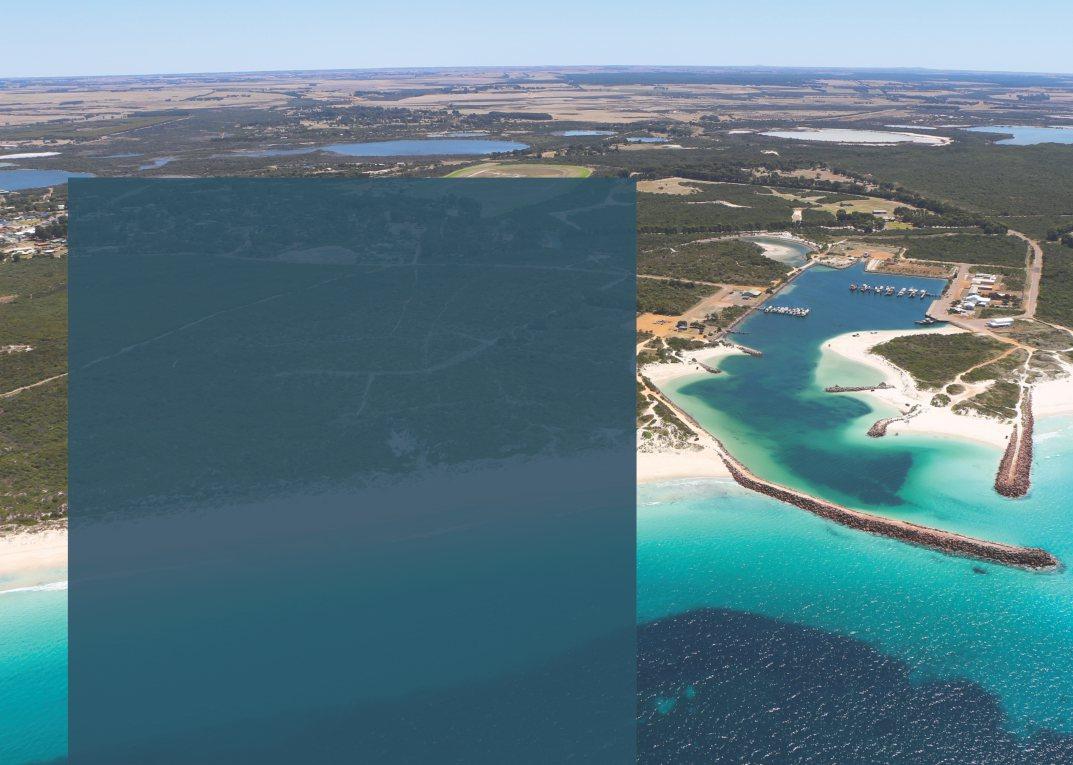
This Annual Report has been compiled by the GEDC and is submitted to the Parliament of Western Australia as a summary of the year's achievements and performance measured against our Government goals, strategic priorities and key performance indicators.
The Annual Report is available in PDF format from our website, and can be www.gedc.wa.gov.au made available in alternative formats on request.
If you would like a printed copy of the report, please contact our office by telephone (08) 9080 5000 or send us an email: info@gedc.wa.gov.au
Making our Annual Report transparent, accurate and relevant is important to us.
To share feedback on this report, please contact us by telephone (08) 9080 5000 or send us an email: info@gedc.wa.gov.au

For the year ended 30 June 2025

The Hon Stephen Dawson MLC Minister for Regional Development
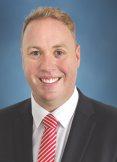
The Hon David Michael MLA Minister for Goldfields-Esperance
The Ministers were appointed to their respective portfolios following the March 2025 State Election.
In accordance with Section 63 of the Financial ManagementAct 2006, we hereby submit for your information and presentation to Parliament the Annual Report of the Goldfields-Esperance Development Commission for the financial year ended 30 June 2025.
The Annual Report has been prepared in accordance with the provisions of the Financial ManagementAct 2006.
The Goldfields-Esperance Development Commission is established under the Regional Development CommissionsAct 1993. In the performance of our functions, we comply with all relevant laws and key legislation impacting on our operations including but not limited to:
Ÿ Regional Development CommissionsAct 1993
Ÿ Auditor GeneralAct 2006
Ÿ Disability ServicesAct 1993
Ÿ Equal OpportunityAct 1984
Ÿ Financial ManagementAct 2006
Ÿ Freedom of InformationAct 1992
Ÿ Industrial RelationsAct 1979
Ÿ Minimum Conditions of EmploymentAct 1993
Ÿ ProcurementAct 2020
Ÿ Public Interest DisclosureAct 2003
Ÿ Public Sector ManagementAct 1994
Ÿ Royalties for RegionsAct 2009
Ÿ Salaries andAllowancesAct 1975
Ÿ State RecordsAct 2000
Ÿ Work Health and SafetyAct 2020
At the date of signing, we are not aware of any circumstances which would render the particulars in this statement misleading or inaccurate.

Terrence Winner Chairperson
August 2025

Kris Starcevich Chief Executive Officer
August 2025

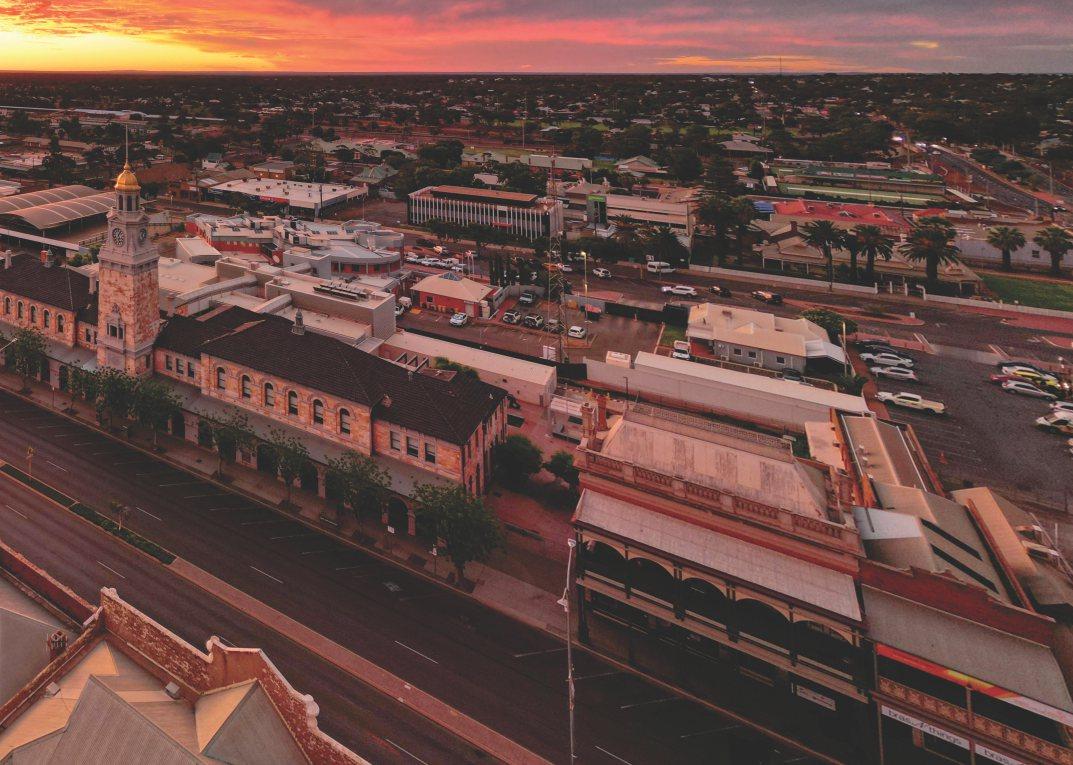

It is my absolute pleasure to present the Goldfields-Esperance Development Commission's (GEDC)Annual Report for the 2024-25 financial year.
What makes our region so special - its diversity, resilience, and innovation - continues to be the foundation of our work. As challenges arise, whether from economic shifts or regional pressures, the people of the Goldfields-Esperance region respond with solutions, creativity, and an undeniable sense of drive. That energy has been central to the efforts of the GEDC over the past year.
This year, the GEDC has helped shape and support projects that unlock opportunities, strengthen local capacity, and respond to the unique needs of our towns and industries. Whether it's driving investment in infrastructure, enabling growth in emerging sectors, or collaborating with community leaders on placemaking initiatives, our work is about delivering results that matter on the ground.
Under the guidance of our Strategic Plan 2025-27 which was refreshed in February 2025 to align with the WA Regional Development Framework, the GEDC has maintained a clear focus on:
Ÿ Economic Development, Diversification, and Innovation
Ÿ Regional Liveability
Ÿ Aboriginal Empowerment and Prosperity
Ÿ Climate Resilience and Low Carbon Transition
Ÿ Organisational Excellence
Our collaborative efforts with local governments, industry stakeholders, and community organisations have been instrumental in advancing these priorities.
An exciting regional development model has emerged from the 2025 State Election, which saw the Honourable Stephen Dawson MLC become the Minister for Regional Development and the appointment of region-specific Ministers to Cabinet.
The Honourable David Michael MLA was appointed as the Minister for the Goldfields-Esperance region and will be an important voice for the issues impacting our region. The GEDC Board and CEO had the pleasure of hosting both Ministers several times since their appointments and we look forward to working closely with them both.
I would like to acknowledge the Honourable Don Punch MLA for his time as our Minister for Regional Development and thank him for his incredible support and for setting the strategic direction for the Portfolio via the WA Regional Development Framework.
We were honoured this year to receive the Gold Award at the WA Lonnie Awards for our 2023-24 Annual Report - a recognition of GEDC's transparency, accountability, and excellence in public sector communication. While awards are not the goal, they do affirm the value of telling our story with purpose and clarity.
Our achievements are a testament to the dedication and expertise of the GEDC team, led by CEO Kris Starcevich,
whose leadership and deep regional insight drives our impact. The team's commitment to excellence, innovation and collaboration continues to drive our success.
I also extend my gratitude to my fellow Board members Tracey Rathbone (Deputy Chair), Tim Carmody, Jaimen Hudson, Sarsha Lander and Katrina Stubbs for their strategic insights and unwavering support. Our collective efforts ensure the Commission remains responsive to the evolving needs of our region.
The road ahead will bring new challenges - from climate adaptation and housing demand to workforce attraction and supply chain resiliencebut it also brings promise. With green energy potential, cultural tourism opportunities, and innovation across mining, agriculture and transport, our region is poised for transformation.
Thank you for your continued support and partnership.
Together, we are shaping a resilient, inclusive, and prosperous region and I invite you to explore the full Annual Report to gain deeper insights into our initiatives and impact over the past year.

Terrence Winner Chairperson

It has been another remarkable year for the Goldfields-Esperance Development Commission, one defined by focused effort, connection, and a strong commitment to building a thriving, inclusive future for our region.
This year, the GEDC worked side-by-side with communities, small business, industries, and government to unlock opportunities and deliver projects that matter - projects that build resilience, grow local capability, and position our region for long-term prosperity.
Collaboration at theCore
Real regional development is never a solo pursuit. It happens when agencies, communities, Traditional Owners, businesses, and all levels of government align behind a common goal. The GEDC continues to act as a connector, bringing people and
ideas together to solve problems and seize opportunities. This collaborative approach is at the heart of everything we do, and is evidenced by the consultation and engagement on key projects such as the Goldfields-Esperance Regional Drought Resilience Plan and Kalgoorlie Rail Realignment Project.
Building meaningful partnerships has been the engine behind our biggest successes. Whether it is supporting First Nations business growth, maximising local content outcomes, collaborating on digital connectivity solutions, or unlocking the region’s freight and logistics potential, our focus remains on enabling others to lead and succeed.
This year, we have supported initiatives that not only respond to the present but anticipate the future, because sustainable development is about being proactive, not reactive.
This year's achievements comprise of a number of exciting initiatives that highlight the diversity and potential of our region including:
Ÿ Collaborating with the Goldfields Voluntary Regional Organisations of Councils to deliver the Draft Goldfields-Esperance Regional Drought Resilience Plan for public comment.
Ÿ Progressing a detailed business case which includes a regional freight analysis, realignment and intermodal terminal options for Kalgoorlie-Boulder, in collaboration with all levels of government and industry.
Ÿ Growing small business and economic diversification through our largest allocation of Regional Economic Development Grants to six local projects.
Ÿ Partnering with the Esperance Tjaltjraak Native Title Aboriginal Corporation (ETNTAC) to advance development of an Aquaculture Precinct concept in Esperance.
Ÿ Working closely with Tjiwarl Aboriginal Corporation as Co-Chair of their Economic Empowerment Working Group.
Each of these projects reflects our values: regional leadership, innovation, and inclusive economic development.
While 2024-25 delivered real wins, we are equally focused on what comes next. The pace of change - across industries like mining, tourism, agribusiness, and renewable energy - is accelerating. With that change comes both challenge and opportunity.
GEDC is committed to staying agile, advocating for the region, and ensuring that local voices guide decision-making. We are also investing in analysis and data, digital capacity, and cross-sector coordination to help the region stay competitive and connected. We remain committed to delivering our key projects and signature programs, like the Regional Economic Development Grants and Local Content Program.
I want to extend my sincere thanks to our Board, our dedicated staff, and the many partners who share our commitment to the Goldfields-Esperance region. Effective regional development is a collective effort and it is your insights, ambition, and dedication that drive the outcomes. Thank you for your continued support and engagement.
Kris Starcevich Chief Executive Officer

The Goldfields-Esperance region is located in the south-eastern corner of WesternAustralia.
The largest region in WA covers an expansive land area of over 2950,000km . This equates to over 148 Perth MetropolitanAreas!
Kilometres per Local GovernmentArea Population per Local Government Area:*
2 Coolgardie 30,298km 2 Dundas 92,886km
2 Esperance 44,798km 2 Kalgoorlie-Boulder 95,500km 2 Laverton 179,994km 2 Leonora 31,915km 2 Menzies 124,115km 2 Ngaanyatjarraku 159,816km
2 Ravensthorpe 9,842km
2 Wiluna 181,297km Kalgoorlie-Boulder
Distance from Perth Esperance to Perth 696km Kalgoorlie to Perth 593km
Shire of Ngaanyatjarraku to Perth 1,571km

Significant
The region is one of the most significant mining regions in Australia producing commodities including gold, nickel, copper, lithium, iron ore, rare earths and critical minerals.The mining sector contributes $27 billion in regional economic output.
The southern region has a strong agricultural sector primarily broadacre crops, with livestock, fisheries and forestry activities. The Port of Esperance is a strategic asset and an important economic enabler for the region, connecting regional industries to global markets. The deepest port across southern WA and the only regional port in the State to have a container crane, it facilitates important trade in iron ore, grain, fertiliser, spodumene, copper concentrate, nickel, woodchips and fuel.
The Goldfields-Esperance region has a wealth of solar, wind and natural resources to support the low carbon energy transition in WA and deposits of critical minerals and rare earths required for battery technology.

OurVision
That the Goldfields-Esperance region is economically and culturally diverse with vibrant communities and a prosperous future.
OurPurpose
To facilitate economic and social development in the region.
OurValues
The GEDC is a values-driven agency that promotes a positive and collaborative working environment within our team, within government and with our stakeholders.
In all that we do, inspiring a culture of innovation, continuous improvement and leadership within the agency. With a responsive approach, and a solid focus on outcomes, we deliver excellence in our portfolio.
Acting with integrity and accountability, making ethical and informed decisions, consistent with State Government objectives. This is demonstrated through excellence in our governance and performance of the agency.
We care about the work we do and the people we work with. We engage respectfully with stakeholders, to connect and collaborate, to understand complex and diverse issues and perspectives, and to facilitate initiatives and investment in the region.
We take a proactive, timely, and adaptable approach to economic development, promoting initiatives that bring about meaningful change within government, industry, and regional communities, making a positive difference for the region and the State.

The Regional Development Portfolio (the Portfolio) comprises the following agencies that work together to develop and implement regional development activity across the State:
Ÿ Western Australian Regional Development Trust (the Trust);
Ÿ Regional Development Council (RDCo);
Ÿ Nine Regional Development Commissions (RDCs) including the GEDC;
Ÿ Department of Primary Industries and Regional Development (DPIRD); and
Ÿ Western Australian Regional Development Alliance (WARDA).
The Portfolio creates the link between government priorities, industry, and regional representation by championing regional economies and being an advocate for the regions across and beyond government. The Portfolio works to develop strong and effective relationships across government, industry and community to achieve positive regional development outcomes.
The Minister for Regional Development published the Regional Development Framework in October 2023 as a new framework to guide the initiatives of the Regional Development Portfolio. The Regional Development Framework sets out a vision for WA regional communities and five areas of focus to guide the work of Portfolio agencies.
These five focus areas respond to regional need, align with Government priorities and the legislative framework for the Portfolio. The five focus areas below, inform the strategic plans and business plans of each portfolio agency including the GEDC.
Ÿ Regional liveability
Ÿ Economic development, diversification and innovation
Ÿ Climate resilience and low carbon transition
Ÿ Aboriginal empowerment and prosperity
Ÿ Organisational excellence
In March 2025, nine new Ministerial portfolios were created, establishing a regionally specific Minister for each of the nine regions. The GEDC will work with the Minister for the Goldfields-Esperance region, in liaison with the Office of the Minister for Regional Development.
The Goldfields-Esperance Development Commission, established under the Regional Development CommissionsAct 1993 (Act), is listed as a statutory authority on Schedule 1 of the Financial ManagementAct 2006 and subject to the provisions of the Public Sector ManagementAct 1994
The GEDC is one of nine Regional Development Commissions, established to fulfill and serve their unique region of Western Australia, and to achieve specific objectives defined in the Act:
Ÿ Maximising job creation and improving career opportunities in the region;
Ÿ Developing and broadening the economic base of the region;
Ÿ Identifying infrastructure services to promote economic and social development within the region;
Ÿ Providing information and advice to promote business development within the region;
Ÿ Seeking to ensure that the general standard of government services and access to those services in the region is comparable to that which applies in the metropolitan area; and
Ÿ Taking steps to encourage, promote, facilitate and monitor economic development in the region.
For the purpose of achieving the objectives, the GEDC is to do the following:
Ÿ Promote the Goldfields-Esperance region;
Ÿ Facilitate co-ordination with relevant statutory bodies and State Government agencies;
Ÿ Cooperate with representatives of industry and commerce, employer and employee organisations, education and training institutions and other sections of the community within the region;
Ÿ Identify the opportunities for investment in the region and encourage that investment;
Ÿ Identify the infrastructure needs of the region, and encourage the provision of that infrastructure in the region; and
Ÿ Cooperate with:
(i) departments of the Public Service of the State and the Commonwealth, and other agencies, instrumentalities and statutory bodies of the State and the Commonwealth;
(ii) and local governments, in order to promote equitable delivery of services within the region.
The Commission is responsible to the Minister for Regional Development. The Minister has the power to direct the GEDC either generally or with respect to a particular matter, on the exercise and performance of its powers, functions and duties under the Act.
The GEDC is governed by a Board of seven people, including six regional representatives from local government, community and Ministerial nomination, and the CEO, who is a member of the Board by virtue of office.
Through a Service Level Agreement (SLA), the Department of Primary Industries and Regional Development supports the GEDC with resources to fulfil its functions under the Act and is the employing agency for the staff assigned to the GEDC under section 29 of the Act. All members of the Board and staff are regionally based and contribute specialised skills, experience and local knowledge that benefits the Commission and the region.
The GEDC Strategic Plan 2025-27 sets out key initiatives and strategies for the GEDC to drive economic and social development for the region.
The GEDC Strategic Plan has five priority areas for the GEDC, these are:
Ÿ Regional Liveability
Ÿ Economic Development, Diversification and Innovation
Ÿ Climate Resilience and Low Carbon Transition
Ÿ Aboriginal Empowerment and Prosperity; and
Ÿ Organisational Excellence
Further information on our Strategic Priorities can be found on page 22.
Minister for Regional Development
Minister for GoldfieldsEsperance
Board members are appointed by the Minister for Regional Development with appointments approved through Cabinet. The GEDC Board of Management holds six Board meetings annually. Meetings are held throughout the region to enable members to be accessible to local stakeholders, which provides valuable insight into the challenges and opportunities facing regional communities and priorities for regional development.
In 2024-25 the Board held a number of Board meetings in several Local Government Areas including the Shires of Laverton, Esperance, Leonora and the City of Kalgoorlie-Boulder.
The Risk Management and Audit Committee (RMAC) is a subcommittee established by the Board and meets three times a year. It is required to manage the risk register and implement actions to identify and mitigate new and changing risks to the agency and government. The RMAC also oversees an effective internal audit function under Section 53 of the Financial ManagementAct 2006.







Terrence Winner, Chairperson
Appointment: Ministerial Representative Term: 1 Oct 2020 - 30 Jun 2026
Terrence was appointed to the GEDC Board in 2020, bringing with him 15 years of experience as a CEO within the not-forprofit sector. Terrence holds qualifications across management, strategic leadership, business, community development, marketing, training, youth and disability services and has excellent insight into regional challenges and opportunities, being raised in the Goldfields.
Terrence is very active within the Goldfields-Esperance community holding several key roles, including elected Councillor with the City of Kalgoorlie-Boulder, CEO of the Goldfields Individual & Family Support Association Inc., and Chair of the Goldfields District Leadership Group.
Tracey Rathbone, Deputy Chairperson
Appointment: Local Government Representative Term: 1 Jan 2022 - 31 Dec 2025
Tracey was elected to the Shire of Coolgardie Council in 2011 and has been the seated Deputy Shire President since 2013.
Tracey holds a Diploma of Local Government, is an Alumna of the Western Australian Local Government Association (WALGA), the Australian Rural Leadership Foundation (ALRF) and the Rural Regional Remote Women's Network of WA (RRR Network). She is passionate about community and applies her individual leadership style locally and regionally, to inspire inclusion, collaboration and change wherever possible.
As a practicing Life Skills Coach, Tracey is committed to making a difference in the community and actively contributes her time in volunteer service to support the success of community groups and organisations, with significant interest in youth, senior citizens, and St John Ambulance.
Jaimen Hudson, Board Member
Appointment: Ministerial Representative Term: 1 Jan 2022 - 31 Dec 2026
Jaimen is an Esperance-based business owner and internationally renowned cinematographer. After becoming
quadriplegic following an accident, Jaimen developed an interest in drone photography and videography and now owns his own business specialising in capturing coastal and marine wildlife footage.
Jaimen has extensive tourism and creative industries experience and in 2021 starred in an acclaimed documentary called Jaimen Hudson: From Sky to Sea.
Timothy Carmody, Board Member
Appointment: Local Government Representative Term: 1 Jan 2022 - 31 Dec 2025
Tim has been a Councillor at the Shire of Wiluna since 2019, becoming Deputy Shire President in 2023.
He is an agricultural business owner with operations in Cascade, Esperance and Wiluna. Tim has 30 years' experience working in the industrial minerals sector and managing mine sites in Australia, Zimbabwe and China. Tim was raised in a farming family based in Kulin and has engaged in the agricultural sector throughout his life.
Katrina Stubbs, Board Member
Appointment: Community Representative Term: 7Aug 2023 - 30 Jun 2026
A Wongutha and Yamatji woman born and raised in the Goldfields, Katrina worked in the mining industry for a number of years before establishing the Kalgoorlie-based business Kai Rho Contracting with her sister in 2013.
Whilst still at school, Katrina learned bookkeeping skills from her mother at the age of 16 – skills which became the foundation for her career in finance. She has a Diploma of Management and Diploma in HR Management from Curtin University, Kalgoorlie.
Now as the Chief Financial Officer for their business, Katrina manages her commitments to work, her family and community. She is passionate about building opportunities in her community and uses her skills as Treasurer for three local organisations: the Kurrawang Aboriginal Christian Community, People's Church Kalgoorlie and the Goldfields Aboriginal Business Chamber.
Katrina's husband works alongside her and they have two children.
Sarsha Lander, Board Member
Appointment: Community Representative Term: 7Aug 2023 - 30 Jun 2026
Since settling in the Goldfields in 2010, Sarsha has developed a strong passion for supporting her community.
With a background in social services focusing on mental health and drug and alcohol services, she transitioned into the disability sector in 2020 and now serves as the Regional Manager for Empowering People in Communities Inc.
Sarsha holds a range of qualifications in leadership, management, mental health, and governance, and maintains a strong desire for continuous learning to better support others.
In addition to her professional roles, she is also the Founder and Chairperson of Golden Community Mile, a small charity dedicated to serving the community on Christmas Day. Sarsha also holds an advisory position with the Museum of the Goldfields where she is committed to the enhancement of local tourism.
Kris joined the Commission in 2014 and was appointed Chief Executive Officer in 2018. His extensive experience working in regional Western Australia in both the public and private sectors ensures Kris offers a holistic approach to regional development.
Born and raised in Esperance, Kris began his career in secondary teaching in the Pilbara where he spent 10 years working and living in several Pilbara communities. During this time Kris diversified his skills in the mining industry, working on site and as a community relations practitioner for Rio Tinto. Kris prides himself on his ability to work closely with local stakeholders and across all levels of government to understand complex regional issues and drive positive social and economic outcomes for the Goldfields-Esperance region.
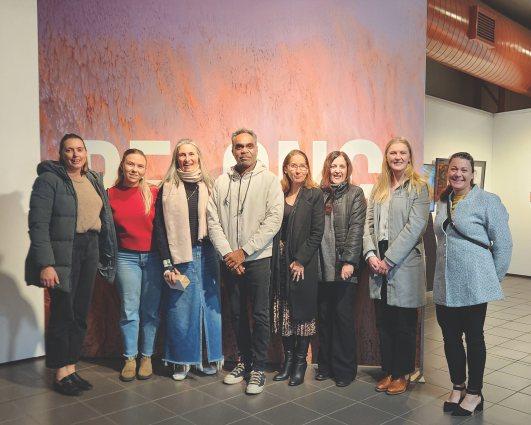
The GEDC staff live and work in the region and have a wide range of skills, experience and professional qualifications.

Rose Riley
Director Regional Development
Key FocusAreas:
·Leadership and performance
·Strategic initiatives
·Regional planning & development
·Industrial land, residential land and housing
·Infrastructure
·Major projects


More than half of the GEDC's regional development staff are Certified Economic Development Practitioners, registered through Economic Development Australia.

Regan Brewer
Director Regional Development
Key FocusAreas:
·Corporate management
·Human resources
·Investment management
·Grant governance
·Community & industry development
·Stakeholder engagement
Sarah Fletcher
Director Regional Development (Projects)
Key FocusAreas:
·Kalgoorlie Rail Realignment Project
·Infrastructure
·Industry development
·Workforce development
·Strategy & policy
·Stakeholder engagement
Jude Daley Local Content Adviser
Key FocusAreas:
·Regional supply & tender opportunities
·Business & industry engagement
·State Government procurement policy
·Inter-agency procurement engagement
·Local participation plans
·Referrals to business advisory services

Haidee Vandenberghe
Senior Regional Development Officer
Key FocusAreas:
·Regional Drought Resilience Planning Program
·Climate resilience and low carbon economy
·Workforce development
·Early childhood education and care sector initiatives
·Stakeholder engagement


Marta Perona
Senior Regional Development Officer
Key FocusAreas:
·Regional Economic Development (RED) Grants
·Community development
·Northern Goldfields projects
·Stakeholder engagement
Sophie Willsher
Regional Development Officer
Key FocusAreas:
·Goldfields-Esperance Regional Drought Resilience Plan
·Creative industry initiatives
·Tourism initiatives
·Community development
·Stakeholder engagement


Michaela Hendry
Regional Development Officer
Key FocusAreas:
·Event management and communications
·Stakeholder engagement
·Data analysis
·Research and publications
·Project support

Gary Bonney
Regional Development Officer
Key FocusAreas:
·Aboriginal empowerment and engagement
·Aboriginal business development
·Creative industries development
·Film industry development – film friendly
·Stakeholder engagement

Pam Sherlock
Regional Development Officer
Key FocusAreas:
·Strategic initiative grants
·Small grants program
·Corporate reporting
·Stakeholder engagement

Karen Theaker Executive Officer
Key FocusAreas:
·Executive management for CEO and Board
·Governance and Ministerial support
·Stakeholder liaison
·Facilitation of regional meetings and events
Rachel Witheridge Executive Officer
Key FocusAreas:
·Corporate management and financial management
·Administering and reporting for Risk Management and Audit Committee
·Internal audit
·Cyber and digital security
The Commission assists the Minister for Regional Development in administration of the Regional Development CommissionsAct 1993
Other key legislation impacting on theagency's activities In the performance of its functions, the GEDC complies with all relevant laws and key legislation impacting on our operations including, but not limited to:
Ÿ Auditor GeneralAct 2006
Ÿ Disability ServicesAct 1993
Ÿ Equal OpportunityAct 1984
Ÿ Financial ManagementAct 2006
Ÿ Freedom of InformationAct 1992
Ÿ Industrial RelationsAct 1979
Ÿ Minimum Conditions of EmploymentAct 1993
Ÿ ProcurementAct 2020
Ÿ Public Interest DisclosureAct 2003
Ÿ Public Sector ManagementAct 1994
Ÿ Royalties for RegionsAct 2009
Ÿ Salaries andAllowancesAct 1975
Ÿ State RecordsAct 2000
Ÿ Work Health and SafetyAct 2020


The State Government uses an Outcomes Based Management Framework to measure the effectiveness of the GEDC in meeting Government goals, desired outcomes and key performance indicators.
The GEDC's Government goals set for 2024-25 were:
Ÿ WA Jobs Plan;
Ÿ Diversifying the Western Australia economy, creating local jobs for the future;
Ÿ Safe, strong and fair communities;
Ÿ Supporting our local regional communities to thrive.
The desired outcome of the GEDC is to encourage and promote opportunities to investment, attract and retain population, and grow the economy of the Goldfields-Esperance region.
The GEDC's role is to promote economic development and sustainable regional communities.
The GEDC has two performance indicators – an effectiveness and an e�ciency indicator – to measure the performance of the GEDC against its Government goals, desired outcomes and service frameworks.
Ÿ The GEDC's effectiveness indicator is a measure of client satisfaction with the provision of an environment conducive to the balanced economic and social development of the Goldfields-Esperance region.
Ÿ The GEDC's efficiency indicator is the average cost per hour to operate the GEDC over the financial year.
The GEDC shares responsibility for achieving its Government goals and outcomes with the Regional Development Portfolio agencies, and by working with Government departments to promote economic development and sustainable regional communities.
To achieve our Government goals, desired outcomes and key performance indicators, the GEDC prepares and implements a Strategic Plan.
The GEDC Strategic Plan 2025 - 2027 was endorsed by the GEDC Board in February 2025 and identifies five strategic priorities.
ClimateResilience andLowCarbon Transition Economic Development, Diversification andInnovation Regional Liveability Aboriginal Empowerment andProsperity Organisational Excellence
Anticipate and adapt to a changing climate and emerging economic opportunities. Asustainable and vibrant regional economy. Enhance liveability in the region. Empowerment of Aboriginal people and organisations. Manage resources effectively and efficiently.

The GEDC is committed to strengthening regional communities and enhancing regional liveability by supporting development of economic and social infrastructure and access to services.
With a strong understanding of the diverse needs and challenges faced across the region, the GEDC is well placed to advocate for locally informed, innovative solutions that make a genuine difference to liveability across our diverse region.
L1:Advocate for service levels in regions to be equitable with the metropolitan area.
District Leadership Group (DLG)
Ÿ GEDC Chair, Terrence Winner, is the independent Chair of the District Leadership Group (DLG) and the GEDC CEO is a member. The DLG brings together regional leaders from across government, services and community with a focus on service coordination, youth, family and domestic violence, and community wellbeing.
Ÿ Chaired the Kalgoorlie-Boulder Housing and Land Group to bring together key stakeholders across industry and government to share information and prioritise regional housing and land matters.
Ÿ Working in partnership with the Regional Development Portfolio, reviewed and provided regional input into new and emerging housing policy and programs.
Ÿ Reviewed funding programs available for housing and land development, to identify opportunities for regional projects and business cases and influence regional policy and funding outcomes.
Ÿ Referred regional local governments to a new Call for Submissions for Local Government Framework through the former Department of Communities, inviting local governments to submit proposals that build housing supply for consideration.
Ÿ Supported the preparation of an application by the Shire of Esperance to the Department of Communities Call for Submission process including regular project meetings and reviews with the Department of Communities and the Shire of Esperance.
Ÿ Engaged regularly with DevelopmentWA to progress housing and residential land development opportunities in Kalgoorlie-Boulder and Esperance.
Ÿ Prepared two Housing and Land Summary publications with key regional housing and land statistics for the Goldfields-Esperance region for Q1 and Q2 2024.
L2: Support the delivery of infrastructure, facilities and services that enhance regional and remote living and underpin economic growth.
Ÿ Administered the 2021 State Election Commitment grant to Full Circle Therapies Mason's House, delivering a purpose-built paediatric allied health therapy centre servicing Goldfields’ children and families.
Ÿ Worked with local and regional stakeholders on the Outback Way to advance the sealing of the Great Central Road and prepare for the socio-economic impacts and opportunities that can be realised from this significant infrastructure investment.
Ÿ Facilitated discussions and actions on regional road and infrastructure matters through the GVROC.
Ÿ Partnered with the Shire of Wiluna through funding to develop a masterplan that will conceptualise its vision for the future, providing guidance for future investment and community infrastructure development.
Ÿ Promoted the James Street Precinct Redevelopment project and business case to relevant Government Ministers and funding agencies, supporting the advocacy work of the Shire of Esperance to attract investment funding for this major revitalisation of the Esperance CBD. The James Street Hub (Stage 1), received $14.9 million from the Commonwealth's Growing Regional Program (Round 2), enabling design and construction plans for a new co-located visitor centre, library, cafe and outdoor area.
Ÿ Contributed information on investment opportunities and potential development sites across the region, to the International Tourism Forum in October 2024 and the Tourism WA Investment Prospectus.
Ÿ Supported the Museum of the Goldfields to explore early concept design work for a potential redevelopment of the Museum.
Ÿ Administered the 2021 State Election Commitment grant to the City of Kalgoorlie-Boulder for the Kalgoorlie-Boulder Youth Precinct project, to transform Kingsbury Park into a modern, vibrant and inclusive youth recreation space.
Ÿ Worked closely with the Shire of Dundas to develop the Eucla Airstrip Upgrade Project which subsequently received $3.38 million funding through the 202425 WA State Budget.
L3: Promote the region by facilitating initiatives that attract investment and increase regional population and visitation.
L4: Collaboratewith government and regional stakeholders to create place-based responses for communities experiencing gaps in infrastructure and services.
Ÿ Provided grant funding for both the Kalgoorlie-Boulder and Esperance Chamber of Commerce and Industry for their Activ8 projects. The series of CBD based activation events aimed to increase visitation and expenditure for local businesses and enhance visitors' experiences.
Ÿ Supported the Shire of Ravensthorpe with grant funding for the Seaview Village Business Case which explores opportunities to repurpose the existing village into tourism and worker accommodation, supporting the region's transition towards a more vibrant and enriching tourism industry.
Ÿ Supported the Ravensthorpe and Hopetoun Future Fund (RHFF) to administer the appointment of a new Chair, and two new community members. The GEDC also participated in the RHFF's strategic planning day and continued to provide support to the Future Fund.
Ÿ The Esperance. In Your Element brand was launched in September 2024 supported by the GEDC. The brand encourages visitors to connect with the natural elements of Esperance with an emphasis on telling an authentic and community led narrative.
Ÿ GEDC supported the Esperance tourism data dashboard pilot to provide robust, real-time data on tourism and visitation to the area, in response to increased visitation. The dashboard incorporates localised data sources to improve decision making and the sustainable management of the tourism sector.
Ÿ Supported the Eastern Goldfields Historical Society to deliver the Kanowna Heritage Trail project which received $105,000 REDs Grant funding to develop a suite of interpretive elements for the tourism trail.
Ÿ Worked with a number of production companies interested in filming in the region through providing regional intelligence, relevant local contacts and location scouting support.
Ÿ Contributed to engagement on the next State Infrastructure Strategy (SIS) via workshops and written representations for the GoldfieldsEsperance region.
Ÿ Collaborated with Early Childhood Education providers to deliver free, targeted professional development and support across the region.
Ÿ Backed the Esperance Chamber of Commerce and Industry’s Esperance Ravensthorpe Leadership Initiative (ERLI) with 16 participants from varying backgrounds and industries completing the course.
Ÿ Worked with the Shire of Esperance to undertake a survey of business employee housing need and demand in Esperance in early 2025.
Ÿ Worked in partnership with the Shire of Esperance to update business case, concept designs and detailed modelling for the Esperance Workers Housing Project and to promote the project to relevant Ministers and government agencies when visiting the region.
Ÿ Commenced work with Goldfields Masonic Homes (GMH) on delivery of Pringle Village stage 2 funded through a 2025 State Government Election Commitment. The project will deliver a 40 unit independent living village for senior residents of the Goldfields and surrounding areas.
Ÿ Worked closely with the Kalgoorlie-Boulder Urban Landcare Group (KBULG) to deliver the Karlkurla Nature Playground, funded by a 2021 State Government Election Commitment. The project provides a new, accessible playground space and amenities for families and visitors to enjoy the natural beauty of Karlkurla Bushland Park.
The Fitzgerald Business Network (FBN) has been delivering business, employment and community support services as part of an initiative aimed at supporting local businesses and employment in the Shire of Ravensthorpe.
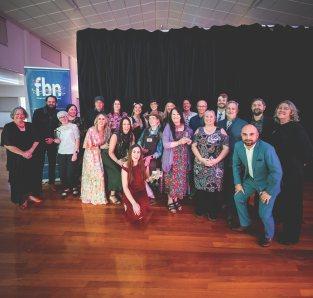
“The Ravensthorpe and Hopetoun Business and Employment Support Package is a short-term initiative, led by the FBN with funding from the GEDC, to help the communities of Hopetoun and Ravensthorpe respond proactively to the recent closures and downgrade of local mining operations to care and maintenance.
“The mining sector was a major contributor to the region's economic output and a significant employer of local people, attracting many families to live and work in the area. The support package delivered by the FBN works directly with businesses and community members affected by these downturns to identify business, employment and economic diversification opportunities to support the local economy and encourage individuals to stay in the area.
Over several months, the FBN delivered a wide variety of activities including one-on-one and group workshops, coaching sessions, community meetings and promotional campaigns. These activities were well received within the community with the Local Business Adviser delivering over 130 hours of business coaching sessions across a three-month period. Additional coaching sessions for remote ready work, grant writing, resume support and interviewing skills were also delivered.
Over 150 attendees met for the one-day event, which featured practical information for community capacity building, personal wellbeing and support, local employment opportunities and business development skills.
The support program allowed regional stakeholders to share local opportunities and build networks. Local mining operations were able to engage directly with community, and students were connected with learning pathways for digital technology training in the mining industry, supporting the emerging workforce to find career opportunities within the region.
Image: FBN Awards Night
Case studies were published to showcase local businesses within Hopetoun, some who had moved from different states, attracted by the people and lifestyle of the area. The support package played an important role in driving positive social outcomes, fostering a sense of pride, community spirit and confidence during a time of job loss and uncertainty.
To further celebrate the strengths and opportunities of the area, the FBN hosted “Fitzy Futures,” a unique event that drew together community, business and industry to collaboratively plan for the future of the Hopetoun and Ravensthorpe area. The event showcased the opportunities of the region, including career pathways, training and skills development programs, mental and financial wellbeing resources and future economic developments for the region.
The Ravensthorpe and Hopetoun Business and Employment Support Package has been proactive and community-led, directly supporting local business, employment and economic diversification opportunities, while celebrating the strengths and spirit of the local community.
The GEDC has supported FBN with the rollout of the support package, attending meetings, workshops and events, engaging with local people and representatives throughout the program. Increased engagement has led to the establishment of the new FBN Business Celebration Awards in June 2025, which the GEDC was proud to sponsor. A range of tourism development initiatives have also been progressed including the South Coast Tourism Group, Hopetown Foreshore Masterplanning and the Seaview Tourism Accommodation proposal.
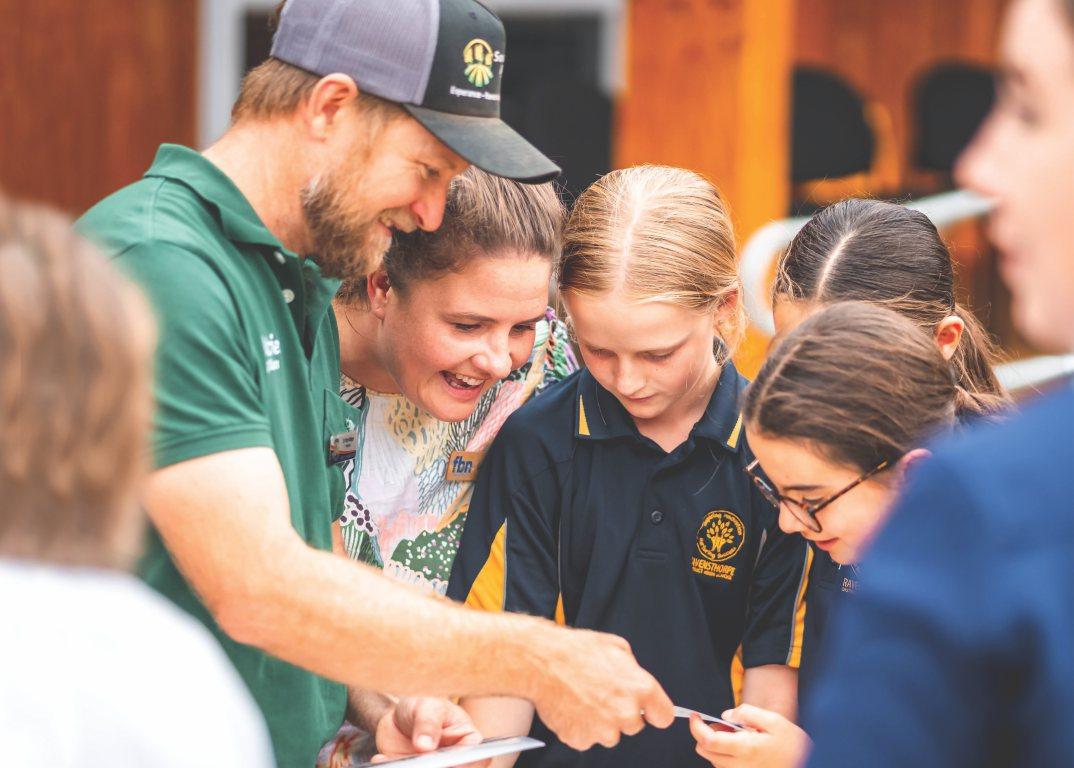
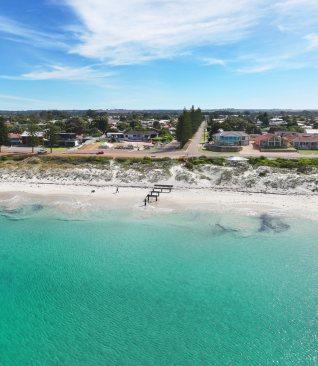
2020 - Emergency accommodation at Blue Waters Lodge
2022 - Esperance Accommodation Study
2023 - Esperance Housing & Land Supply Study
The supply and affordability of housing is a critical issue and opportunity for Esperance. Over five years, the GEDC has worked in partnership with the Shire of Esperance to explore and understand the housing issues specific to Esperance and identify solutions to increase supply.
In response to a critical housing and rental shortage in Esperance, the Shire of Esperance in partnership with the GEDC, developed a business case for a new twenty-unit housing development project in the heart of Esperance targeted towards key workers.
The project is a locally led solution to housing and rental shortages aiming to deliver affordable accommodation options for employers and employees. Esperance has a very low unemployment rate (around 2%) and most businesses and government agencies must bring workers in from outside Esperance to fill vacant positions. In addition, Esperance has a growing population and economy, with traditional industry sectors like agricultural, logistics and tourism in expansion. It also has new industries, such as renewable energy, attracting new demand for trade and labour into the economy. Housing is essential to enable incoming workers to relocate and to support the development and expansion of the local economy.
With no nearby towns or settlements offering alternative accommodation—the closest being 200km away—the private construction sector operating at capacity, and no community housing providers based in Esperance, the Shire with the GEDC have taken the lead in developing this housing proposal. The initiative specifically aims to address the growing need for
2023 - Business case development for Esperance Workers Accommodation Project
2023/24 - Advocacy for Esperance housing issues and Esperance Key Worker Housing Project
2024/25 - Development and submission of application for Department of Communities ‘Call for Submissions for Local Government’ framework.
affordable rental options for lower-income workers in key sectors such as health and social care, small business, tourism and hospitality, and government services. A locally developed solution also accounts for the inherent difficulties with delivering affordable housing projects in a remote location such as Esperance, where the cost to develop often exceeds the sale value or rental yields of the property. This is due to the increased materials and labour costs and constrained local construction and trade capacity. In the Goldfields-Esperance region, skilled workers are also in strong demand in the mining sector which 'out competes' other sectors with wages and other benefits.
The Shire, GEDC and Esperance Chamber of Commerce and Industry released a survey to local businesses, including larger not-for-profit organisations in early 2025, to understand how the housing and rental shortage continues to impact their ability to attract and retain workers and to gather specific employee housing need information.
Nearly all businesses responding to the survey (91%) cited that housing was a barrier to employing staff, with many having negotiated contracts with suitable employees that were subsequently not able to relocate to Esperance to accept the positions, as there was no accommodation available.
The survey highlights the need to find solutions that provide a range of accommodation options for worker in order to support local business growth.
Existing employees require accommodation 39
Positions could be filled if housing was available
~0%
Rental vacancy rate
(2022, 2023, 2024)
Businesses and key service agencies would commit to a lease and advertise a position with the offer of accommodation
Target salary range for employees was under $100,000 (68% of respondents)
The GEDC has worked closely with the Shire of Esperance to develop and refine the business case for this proposal, following housing needs analysis and land supply studies undertaken to understand Esperance's specific housing need and identify the best value locally led solution to address worker and affordable accommodation 'gaps' in the housing market.
Submissions for funding made in previous financial years were unsuccessful although feedback regarding the project and business case was highly positive. The Esperance Key Worker Housing Project was not eligible for some government funding programs, as the land is already serviced and the business case is seeking capital funding only – not servicing infrastructure and headworks components.
In September 2024, the State Government announced a Call for Submissions for Local Government through the former Department of Communities, inviting local governments to lodge project submissions to bolster the supply and diversity of social and affordable housing and key worker accommodation across Western Australia.
From September 2024 to March 2025, the Shire and GEDC met regularly with the Call for Submissions team, to refine an application for the Key Worker Housing Project under this new funding framework. Concept designs and refined costings were undertaken as part of the process as well as detailed modelling for the target housing profile for the development. The final application was for a twenty-unit development comprising six double storey apartments and 14 single storey dwellings, with an allocation of units split between affordable housing (with discounted rental options for low-income workers), key worker housing and government employee housing.
The Shire and GEDC briefed the Minister for GoldfieldsEsperance on the project in May 2025 during a visit to Esperance which included a tour of the proposed site.
A response on the outcome of the application is expected shortly. The GEDC will continue to work with the Shire to support the new twenty-unit housing development and other stakeholder initiatives that can deliver affordable rental housing for workers and socioeconomic outcomes for community, business and industry.
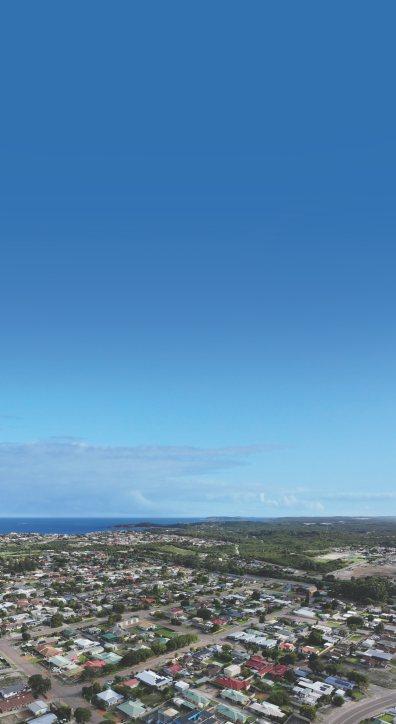
Total project cost
$10.3million
20 Dwellings
1 & 2
Bed units
1 & 2 bath
Centrally located serviced land in Esperance CBD

Servicing key workers in Ÿ Aged care
Ÿ Early childhood education care
Ÿ Hospitality and tourism
Ÿ SMEs

Affordable rentals for Ÿ Key workers Ÿ SMEs
Ÿ Government employees

Close proximity to hospital, aged care facility, schools, childcare, CBD, shops and businesses
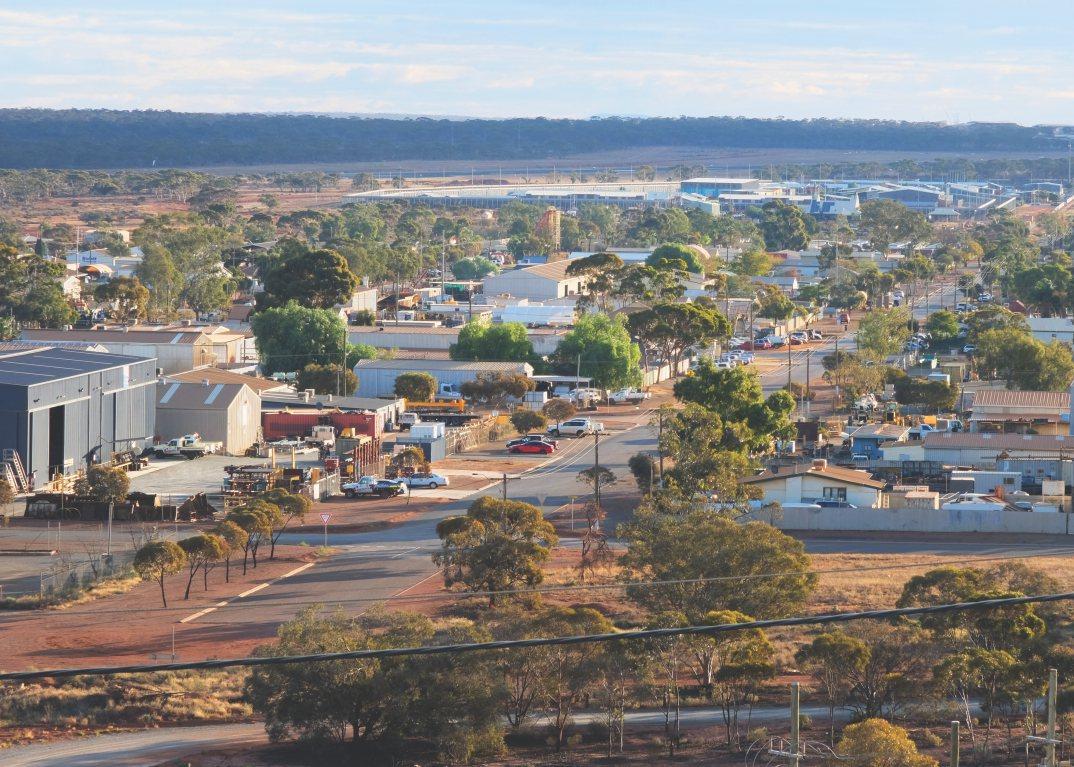
Asustainableandvibrant regionaleconomy
The GEDC's focus is on diversifying the region's industries and developing a more complex economy to maintain and foster prosperity, minimise the impact of market shocks and global disruptions, and foster sustainableeconomic development.
E1: Facilitateinvestment to attract and retain people, jobs and skills in the region.
E2: Optimise the benefits and outcomes of industry development for regional communities.
Ÿ Provided advice to existing and emerging business and industry proponents on regional matters of relevance to their proposals, funding and investment avenues and supported them in navigating government processes and requirements.
Ÿ Hosted investment meetings with project proponents interested in developing in the region, while providing regional intelligence, inter-agency liaison and referrals, and community engagement support.
Ÿ Supported the production of an Investment Prospectus for the Northern Goldfields in collaboration with Shires of Leonora, Laverton, Menzies, Wiluna and Ngaanyatjarraku, providing an overview of each LGA highlighting economic data and analysis, economic initiatives and investment opportunities.
Ÿ Investigated new economic opportunities and potential freight and supply chain efficiencies by leading the Kalgoorlie Rail Realignment Project (KRRP) Detailed Business Case. The KRRP explores potential rail realignment and intermodal terminal options for the City of Kalgoorlie-Boulder, and methodologies to deliver a preferred option.
Ÿ Chaired the meetings of the Goldfields Industrial Land Strategic Forum held in August and November 2024, and February and May 2025, to share updates and actions on industrial land matters across strategic, general and light industrial areas in the Goldfields.
Ÿ Engaged in ongoing advocacy and liaison with agencies including DevelopmentWA to progress the funding, subdivision and development of Yilkari Industrial Park (formerly known as Anzac Drive West). Strategically located on Great Eastern Highway and Anzac Drive, Yilkari will service growing demand from transport, logistics, and mining services businesses for general and light industrial land. The Government announced the commencement of construction of up to 120 lots at Yilkari in April 2025.
Ÿ Hosted agency visits to the region including DJTSI and DevelopmentWA to meet with local stakeholders and visit industrial land and major project sites.
Ÿ Promoted the interests of the region and the Goldfields Mungari Strategic Industrial Area (SIA) as part of the State's Strategic Industries Fund, in collaboration with JTSI.
Ÿ Provided continued support to identify and prioritise regional telecommunications investment alongside DPIRD. The GEDC also worked with local government, RDA Goldfields-Esperance, and NBN Co to develop and progress a Goldfields-Esperance Digital Plan for the region.
Ÿ Delivered tender writing workshops in Kalgoorlie in May 2025 to build regional business skills to write compelling bids for government supply opportunities.
E3: Provide leadership and local knowledge on strategic, regional and local planning for industrial, commercial and residential development.
E4: Influence Government policy to enable diversification, business development, innovation and regional investment.
Ÿ Provided timely regional information and statistics on housing and land matters to potential investors, project proponents and government agencies.
Ÿ Engaged with the development of the new Department of Transport State Regional Freight Strategy through information, review and attendance at the Esperance and Kalgoorlie-Boulder regional workshops.
Ÿ Advocated for a range of investment proposals for residential, commercial and industrial land development in regional centres including Esperance, Leonora, Laverton and Wiluna and supported feasibility and planning by State and local governments.
Ÿ Worked closely with the Goldfields Voluntary Regional Organisation of Councils (GVROC) on advancing regionally significant issues. Key initiatives include climate alliance, water security and development of a regional drought resilience plan.
Ÿ Participated in State and cross-regional working groups to advance tourism opportunities across the region and share knowledge for a coordinated approach to tourism development and regional investment.
Ÿ Provided information to Tourism WA on available tourism development sites to inform the development of a WA Tourism Investment Prospectus for the Tourism Council of WA International Conference in October 2025.
Ÿ GEDC CEO attended the Outback Way Forum held in Canberra in July 2024 to raise awareness of the impacts and opportunities that will come with sealing the road from Laverton in WA to Winton in QLD and to promote socio-economic analysis of these opportunities to ensure benefits are realised for the communities of the Northern Goldfields and the Ngaanyatjarra Lands.
Enabling new economic opportunities for KalgoorlieBoulder including increased efficiencies in supply chains, expansion of existing mining operations, and support for the development of new industrial activities.
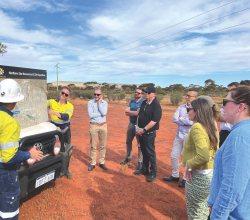
local, state & Commonwealth Government organisations
bi-montly Steering Group meetings held in 2024-25
freight and logistics companies surveyed
stakeholders engaged in initial consultation
A Commonwealth and State Government funded project ($2.5 million), the KRRP is the development and delivery of a Detailed Business Case (DBC) that examines potential rail realignment and intermodal terminal (IMT) options within Kalgoorlie-Boulder. The approach to the KRRP aligns with the State Government Strategic Asset Management Framework and Infrastructure Australia's market led proposal requirements.
Realigning the National east-west rail line through Kalgoorlie-Boulder (to Perth) has been a long-standing proposal for local stakeholders along with the proposed development of new IMT facilities in Kalgoorlie-Boulder. Historic interest from the early 2000's has been motivated by possibilities to increase urban amenity, road safety through mode shift to rail, improved freight efficiency, and economic and supply chain opportunities associated with expanded freight facilities.
In response to local advocacy, the Commonwealth Government committed $2 million towards a DBC through the National Partnerships Program, conditional on a twenty percent State Government co-contribution which was obtained by the GEDC. GEDC was appointed the lead agency for the Project with support from the Department Primary Industries Regional Development (DPIRD), Department of Transport (DoT) and the Public Transport Authority (PTA). These agencies participate in the project steering committee (Steering Group) established in mid-2023 for the Governance of the KRRP and which features membership from ten State Government agencies, the Department of Infrastructure Transport, Regional Development, Communications and the Arts (DITRDCA), and the City of Kalgoorlie-Boulder (CKB).
Following preliminary research and stakeholder engagement to gain insight into the contemporary context for the project and Investment Logic
Mapping facilitated by the Western Australian Treasury Corporation, a scope of works was developed and tender procurement undertaken assisted by the Department of Finance (DoF) and DPIRD.
Deloitte Touche Tohmatsu (Deloitte) was awarded the contract for the KRRP with a commencement date in July 2024. Reporting bimonthly to the Steering Group, weekly to the GEDC and to the GEDC Board, Deloitte are delivering the KRRP in simultaneous streams of work to maximize output over time, and through shared expertise and collaboration across teams. The KRRP was featured at the GEDC What’s Down The Track (WDTT) exhibition booth in November 2024 as part of stakeholder communications for the project.
Progress this year includes targeted stakeholder engagement, refining the problem statement, extending the long list options for rail realignment and IMT locations, technical assessment including for land, economic forecasting, finalisation of the transport model and spatial platform builds, development of freight modelling tools, sourcing and populating freight data, refining project narrative, developing Multi Criteria Analysis (MCA) metrics and refining and completing the evaluation process with the Steering Group to identify a short list of options. Preliminary and more advanced engineering design have been undertaken across the project stages.
Current activity is focused on refining the short list of options for the optimum infrastructure proposal, completing the freight and supply chain studies, engineering design, business case content, and continuing consultation with key stakeholders. The KRRP business case is expected to be finalised in the 2025-26 financial year.
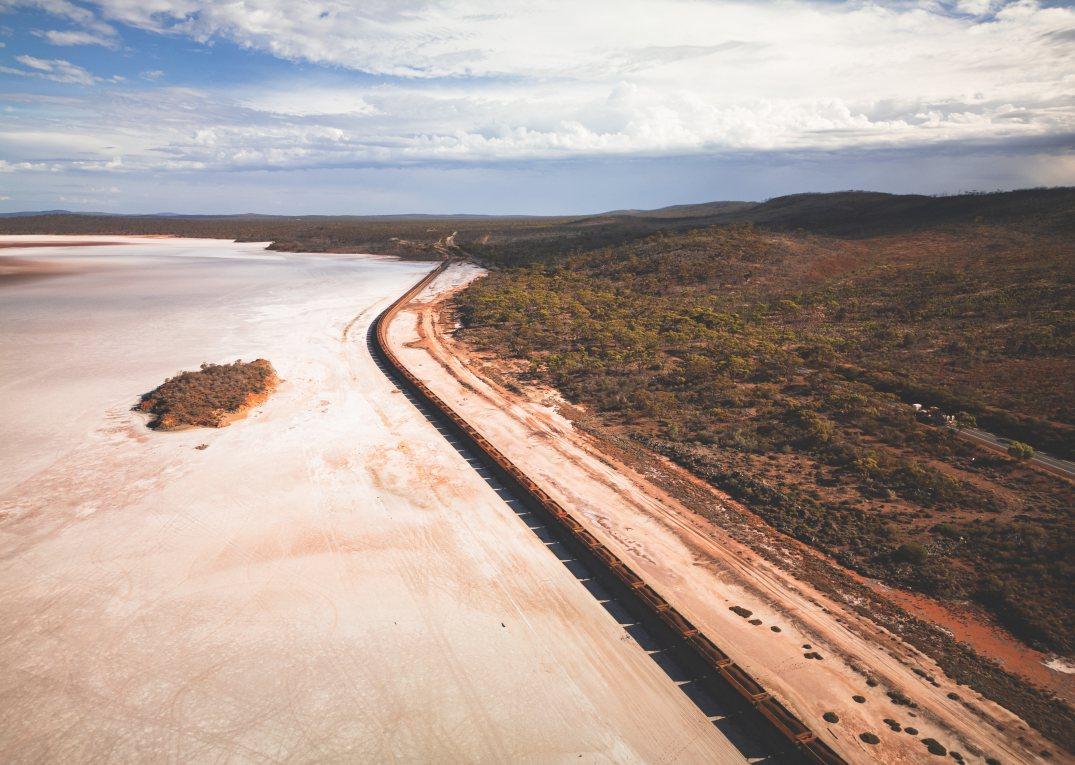
Six Goldfields-Esperance projects were awarded funding through the REDs Grant Program, sharing over $1 million in funding delivered for Round 7 (2024-25).
The grant recipients were across a range of sectors including automotive, community, construction, manufacturing and tourism. The broad range of projects aim to enhance the region's productivity, grow partnerships, build capacity and drive sustainable job outcomes.
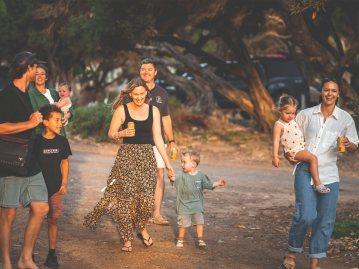
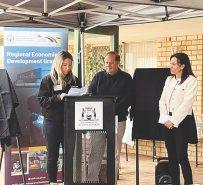
Demolition WA received a $125,000 grant towards attaining their Class A Asbestos Removal Licence, to enable friable asbestos work in the region. Removal of friable asbestos currently requires engagement of businesses from Perth, however this project will allow local removal, improve community safety and local service provision.
Business Owner, Jamie Hunter said
“The grant will support us toward becoming one of the first regionally based Class A asbestos removalists in WA. This new licence will not only facilitate the expansion of our business but also create job opportunities for local residents and we will be safely able to manage friable asbestos on properties and sites efficiently and affordably."

Drake-Brockman Building and Construction Pty Ltd received a $250,000 grant towards a new workshop in Esperance, to increase services and productivity within the local building sector. The project involves the construction of a new cabinetry and wall framing workshop and purchase of essential equipment.
Director, Michael Drake-Brockman said
“Starting a cabinetry business (Custom Cabinet Designs) has been in the planning stage and now, due to this grant, we are able to fast track the project to be a full-scale operational business in 2025. The new workshop will create more employment opportunities and provide hands-on experience in a broad range of works in cabinetry and wall framing. This will make us more efficient and broaden our capabilities in the building sector for commercial and residential projects."

Esperance Smash Repairs received a $145,000 grant to install a new automotive downdraft spray booth with compressor and power upgrade, improving business productivity. The project supports critical services, through an increased number of repairs per week, which will have benefits for local supply chains such as parts suppliers, mechanics and tyre centres which stimulate further business development and investment in the region.
Managing Director, Melisa Rowe said
“The new booth will significantly enhance our productivity by enabling concurrent refinish jobs, thereby increasing our weekly job capacity and reducing turnaround times. Advanced paint application technology will decrease spraying and drying times by 25%, enhancing paint preparation and finish quality. We also plan to increase the weekly number of vehicles repaired.”

Hopetoun Beachside Caravan Park received a $200,000 grant towards becoming an accessible caravan park and enhancing Hopetoun as a tourist destination for the accessible tourism market by installing two family holiday cabins, with wheelchair appropriate facilities, including a large deck and BBQ area.
Business owner, Travis Daw said
“Our project will enable us to build two fully accessible cabins - which is the first step in making our park an attractive family and accessible destination. We live in one of the most beautiful places in the country and our dream is to share our area with all people, regardless of ability. Currently, Hopetoun doesn't have fully accessible accommodation, and there are limited options for families close to the beach.”

Empowering People in Communities (EPIC) received a $240,000 grant to expand their EpiCafe in Kalgoorlie to offer hands-on training and qualifications in hospitality for people with disability. The funding will enable EPIC to upgrade the premises, expand catering services, and enable 50 more individuals to join thereby gaining skills and enhancing their food safety knowledge.
Kalgoorlie Regional Manager, Sarsha Lander said
“EpiCafe was started to address the lack of meaningful employment for people with disabilities in the Goldfields. EpiCafe offers training and employment through our canteen. Participants also receive training certificates through the local TAFE and other providers.”
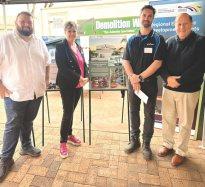
Hydramech Engineering received a $90,000 grant to support the purchase of a cutting-edge CNC Coordinate Measuring Machine to increase manufacturing and fabrication capabilities at the KalgoorlieBoulder workshop.
Managing Director, Stephen Nappy said
“Hydramech has evolved from a traditional machine shop for hydraulic cylinders and underground mining machinery components to a repair venue with fully autonomous manufacturing and welding capabilities. Our intent is evolve to a quality manufacturer, and take advantage of the economies of scale that our business brings while increasing options for our customers in Kalgoorlie.”
“ “
Each of these new REDs projects will enhance regional liveability and economic development across the region. Throughout the year, GEDC works closely with successful REDs Grants recipients to deliver their projects and ensure they are supported to achieve their project outcomes in a timely manner.
GEDC provides advice and support to the grant recipients through the delivery of their project, hosting meetings and events to promote the projects and their outcomes. GEDC also supports unsuccessful applicants to identify other funding opportunities and improve their project scope for future success.

Anticipateandadapttoa changingclimateand emergingeconomic opportunities.
The GEDC's focus is on supporting the region to adapt to a changing climate by supporting thelow carbon economy and informing and guiding actions aimed at achieving water security and drought resilience across the region.
C1: Support low carbon and renewable energy projects in the region by fostering community engagement and leveraging local benefits.
Ÿ Partnered with the Great Southern Development Commission to undertake a joint study on regional planning for the transition to a low carbon economy. A detailed scope for the project was developed and procurement was undertaken to appoint a suitable consultant to support the project. Initiation meetings were commenced, and the project will continue into next financial year with regional consultation workshops and engagement with State and Commonwealth Government agencies.
Ÿ Provided input into planning, development, and environmental regulatory and engagement processes for major energy projects in the region including the proposed Western Green Energy Hub.
Ÿ Participated in the Regional Development Portfolio Low Carbon Working Group.
C2: Position the region to optimise the transition to a lowcarbon economy by supporting government and industry initiatives that lower energy consumption, pollution and emissions.
Ÿ Provided advice and engagement support to Powering WA on the implementation of Stage 1 and development of Stage 2 of the Goldfields Regional Network Project which will provide a business case for low emission, privately owned and collaboratively developed renewable energy electricity network to sustain energy security for the regional economy in alignment with 2030 decarbonisation goals.
Ÿ Identified and initiated the transfer of funding from the DPIRD and GEDC Goldfields Solar Feasibility Initiative, to be utilised by Powering WA towards Stage 2 of the Goldfields Regional Network project. Funding will contribute towards identifying potential routes for the proposed electricity transmission network and engagement with Aboriginal organisations in the region about the proposed routes and potential for benefits sharing through the project.
Ÿ Contributed to the Department of Training and Workforce Development's Clean Energy Skills Workshops, aimed at assessing the capacity and training network required to develop a highly skilled workforce for the emerging clean energy sector.
C3: Collaborateon critical placebased outcomes to support local climate mitigation and adaptation actions, building resilience through planning and capacity building.
C4: Co-operate to facilitate the region's economic and climate preparedness and advocatefor the development of sustainable, resilient and secure infrastructure for the region.
Ÿ Opened the Regional Drought Resilience Plan for public consultation in June 2025 aimed at identifying actions to drive water security solutions and manage climate-related risk across the region.
Ÿ Engaged with agencies progressing State Government climate migration actions to influence beneficial outcomes for the region and to assist centrally based agencies to understand local issues and barriers. This included DWER, DJTSI, DPLH and others.
Ÿ Engaged with DPLH to workshop proposed planning codes for renewable energy and provide specific regional planning issues for consideration including bushfire planning, access to emergency services and leveraging community benefits.
Ÿ Engaged with prospective investment proponents on a range of new energy projects and initiatives including solar, wind, biofuel, and gas supply projects across the region.
Ÿ Chaired the Goldfields Esperance Water Security Group, tasked with strategic oversight of the development and implementation of the Regional Drought Resilience Plan.
Ÿ Participated in bioenergy workshops and community engagement to support the early development of the WA Bioenergy Strategy, led by DPIRD, and to understand and leverage biofuel opportunities in the Goldfields-Esperance region.
The Goldfields-Esperance Regional Drought Resilience Plan will present a coordinated approach to building drought resilience for communities, industries and landscapes.
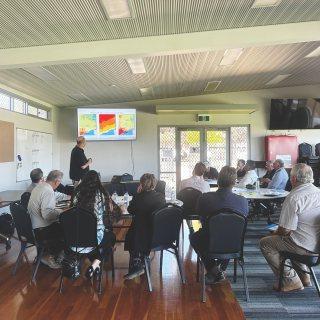
Water security is a significant economic enabler and key driver of regional liveability for communities across the GoldfieldsEsperance region. As the region's climate, water requirements and availability evolve, effort to increase the region's drought resilience and water security is required to ensure the sustainability and prosperity of Goldfields-Esperance communities, industries and landscapes.
Since March 2024, the GEDC has been working closely with local government and regional stakeholders to deliver a Regional Drought Resilience Plan. This Plan presents a coordinated approach to building drought resilience in the region with a strong focus on water security. It has been informed by empirical and anecdotal evidence to ensure this approach is underpinned by a robust evidence base and is reflective of the region's lived experience.
Approximately 170 individuals and 60 organisations were engaged through the development of the Plan with staff travelling thousands of kilometres across the region to engage face-to-face with stakeholders at meetings, workshops and events.
During the consultation and engagement processes, four clear thematic outcomes emerged that together support the objectives of the Plan and the priorities and aspirations of the region.
Underpinning these thematic outcomes is the fundamental principle of healthy landscapes, which reflects the significance of conserving and restoring landscapes to sustain healthy water resources into the future.
Almost universally, consultations revealed communities did not want to be passive recipients of water-focused responses. Instead, communities want to be empowered to seek the solutions required to build long term sustainability for their landscapes, communities and economic fabric.
Stakeholders clearly want to ensure the Plan's actions would build resilience and focus on preparedness rather than reactive response. As such, the Plan will put forward future-focused actions that enable economic growth, and place communities in a position to harness emerging opportunities in a dynamic manner. Around 50 actions were identified, which aim to build water security for the region and enable sustainable growth and
liveability outcomes. In June 2025, the Plan was made available for a public comment period, with feedback informing the final Plan.
Following its completion, the GEDC will continue to work closely with regional stakeholders to implement the Plan's priority actions. These will build on and adapt in response to emerging information and data to ensure that the Plan is flexible against a range of future climate scenarios.
The Regional Drought Resilience Plan (KDRP) is jointly funded by the Commonwealth Government's Future Drought Fund and the Western Australian Government's Department of Primary Industries and Regional Development. The RDRP for the Goldfields-Esperance region is delivered by the GEDC.


The GEDC's focus is on genuinely and meaningfully supporting a future in which allAboriginal people, families and communities are empowered and choose their futures from a secure foundation.
A1: Foster partnerships, shared decision-making, and engagement that supports Aboriginal-led solutions and enhanced social and economic outcomes.
Ÿ Co-chaired the Economic Empowerment Working Group established under the Tjiwarl Agreement, in partnership with a Tjiwarl Chair and members. Provided advice to the group on economic development issues and opportunities arising through the year.
Ÿ Worked in co-design partnership with Tjiwarl Aboriginal Corporation to develop a detailed scope for an Economic Empowerment Strategy for Tjiwarl people.
Ÿ Participated in procurement panel processes to appoint suitable socio-economic and cultural consultancy expertise to help facilitate the development of the Tjiwarl Economic Empowerment Strategy.
Ÿ Supported further concept development and pre-feasibility work on the Kepa Kurl Aquaculture Precinct with ETNTAC, DPIRD and industry.
Ÿ Supported Esperance Tjaltjraak Native Title Aboriginal Corporation (ETNTAC) NAIDOC week events in Esperance.
Ÿ Staff from the Esperance office attended an Indigenous Cultural and Intellectual Property workshop facilitated by Terri Janke and Company Consultants and engaged with staff from local Aboriginal organisations.
A2: PromoteAboriginal people's employment and business aspirations by connecting with industry opportunities and government program support.
Ÿ Provided funding support towards a detailed housing needs analysis by Tjiwarl Aboriginal Corporation to gather quantitative and qualitative data and better understand members' housing needs and aspirations. When completed, this information will help inform the Economic Empowerment Group on housing investment opportunities and potential projects.
Ÿ Established the Ignite Collaborative, a collaboration between the GEDC Local Content Adviser, Goldfields Aboriginal Business Chamber, and Waalitj to provide a one-stop-shop for business support services and connections to grant, training, networking and local supply opportunities.
Ÿ Worked with Leonora based Nyunngaku Aboriginal Corporation to explore on-country immersive Aboriginal cultural experiences for corporate clients to understand the complexities of Aboriginal culture and optimise opportunities for Aboriginal businesses and employment.
Ÿ Supported the Yuwa Aboriginal Business Conference in Kalgoorlie-Boulder hosted by the Goldfields Aboriginal Business Chamber. Through an expo booth shared with the DPIRD Aboriginal Economic Development team, the GEDC was able to promote key initiatives and State Government opportunities to attendees.
Ÿ Worked with the City of Kalgoorlie-Boulder to deliver the First Nations Arts project, which commissioned local First Nations artists to create murals, sculpture and multi-media arts pieces for the Kalgoorlie City Centre Project.
A3: Promote the growth of Aboriginal representation in local decision-making and assist with improved engagement by government and industry.
A4: Increase the proportion of service delivery byAboriginal community-controlled organisations and businesses by supporting procurement and capability building.
Ÿ Supported a number of Goldfields-Esperance artists with bursaries to travel to Bunbury for the Australian Art Centre Hub WA Our Business Forum.
Ÿ Continued to be an active member of the Tjiwarl Palyakuwa (Agreement) Implementation Committee Meeting and Co-Chair of the Tjiwarl Economic Empowerment Working Group as part of the Agreement with the State Government.
Ÿ Launched the Aboriginal Business Leadership Initiative (ABLI), a targeted training program aimed at Aboriginal business leaders and entrepreneurs to be delivered in partnership with DPIRD during the 2025-26 financial year.
Ÿ Supported two successful Northern Native Seed Industry Development Initiative (NNSIDI) grant recipients in the region; Mantjiljarra Yulparirra Pty Ltd and MN Development Corporation Pty Ltd. NNSIDI is a joint initiative of the GEDC, PDC and KDC and supports the creation of new and innovative seed production enterprises in the three regions.
Ÿ GEDC CEO presented at the Goldfields Prescribed Body Corporate (PBC) Forum hosted by Native Title Services Goldfields and the National Native Title Council. This was the first forum of its kind for the Goldfields and provided an opportunity for PBCs to identify and discuss issues common to the sector.

Most small businesses start with a good idea and a leap of faith. Navigating the complexities of running a business, generating enough work to sustain the business and growing to the next level can be challenging. Knowing where to go to get help and having the time to meet multiple service providers can also be difficult and time consuming.

This year the GEDC Local Content Adviser established the Ignite Collaborative in partnership with the Goldfields Aboriginal Business Chamber (GABC) General Manager and Stronger Business Coordinator, and Waalitj Hub Business Coach.
The Collaborative provides a one-stop-shop for Aboriginal businesses in Kalgoorlie-Boulder through a monthly walk-in session at the GABC office.
The sessions offer an opportunity for existing and potential business owners to tell their story, find answers to their questions, discover services and opportunities they were unaware were available to them, and make valuable connections.
The support services available through the Ignite Collaborative are extensive and relevant to a wide range of businesses, from startup to evolved, successful businesses looking to grow.
Ignite Collaborativeservices
The Collaborative also attracts government agency buyers and key stakeholders including policy and grant makers to meet with local business. This provides the perfect opportunity to connect and find out how to maximise on the broad range of State Government and other opportunities to develop the capacity and support Aboriginal businesses in the regions.
Local stakeholders and others visiting the region are invited to meet the Ignite Collaborative at GABC to gain an understanding of the regions Aboriginal business offerings and the wraparound support services available to them. This puts local businesses on the radar and builds confidence and trust with government stakeholders.
The Collaborative is also ‘feet on the ground’, enabling individual and tailored discussions and advice on business needs, challenges and opportunties - all in person and in one place right here in Kalgoorlie-Boulder.
APPRENTICESHIP OPPORTUNITIES
OPPORTUNITIES TO SUPPLY TO GOVERNMENT, FROM SIMPLE TRANSACTIONS UP TO $5K TO $MULTIMILLION TENDERS
ABORIGINALBUSINESSDIRECTORY UNDERSTANDING GOVERNMENT SUPPLY PROCESS
CONNECTIONS TO
&
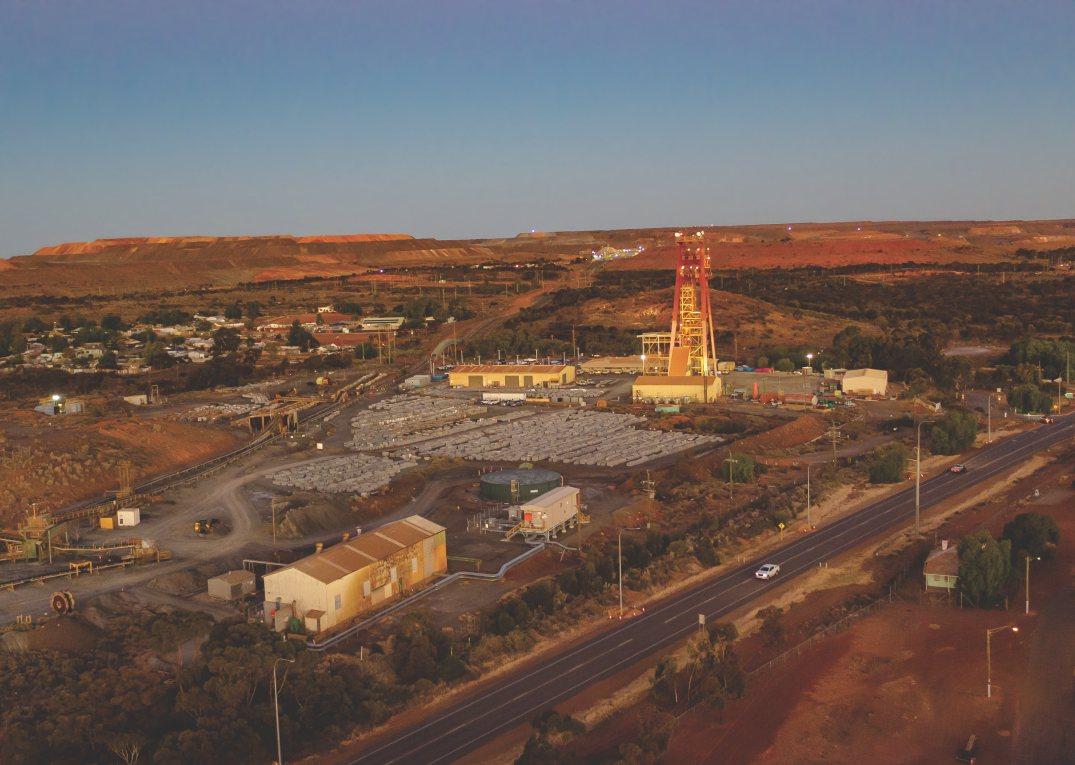
Manageresourceseffectively ande�ciently
The GEDC's focus is on delivering the State Government objectives and maintaining our service across a large region with a broad rangeof stakeholders, ensuring we have modern systems, safe and fit-forpurpose assets, and a capable workforce.
O1: Demonstrate regional leadership, influence whole-ofgovernment collaboration and bea trusted source of regional intelligence.
Ÿ Produced a monthly e-news publication in-house, which is circulated to over a thousand regional and non-regional stakeholders. This publication highlights the work of the State Government and GEDC as well as Ministers for Regional Development and Goldfields-Esperance.
Ÿ Produced and published weekly content prepared in-house, for our social media platforms, LinkedIn, and Facebook, sharing news and information about the work of the State Government, GEDC and regional matters of interest.
Ÿ Managed the GEDC website as a source of information for key programs, events and statistical information about the Goldfields-Esperance region.
Ÿ Engaged regionally based businesses to support production of specialised graphic design and comms support for reports, publications, and event collateral, building local capability and supporting local content outcomes.
Ÿ Worked with creative businesses to deliver photography and videography of the region for the GEDC, for use in promoting the region at events and in publications. Also shared this collateral with other State agencies requiring imagery of the region.
Ÿ Maintained our digital asset management system with a range of photography and videography from local events for use in promoting the work of the GEDC, the Regional Development Portfolio, and the region.
Ÿ Contributed to Regional Development Portfolio submissions and consultations on behalf of the region.
Ÿ Chaired the Goldfields Regional Coordinating Committee and actively participated in the Esperance Regional Coordinating Committee, working with DTWD and key stakeholders to identify and progress workforce participation and training initiatives.
Ÿ Reestablished the Dundas Coordination Group to bring together the Shire and key stakeholders to explore economic development and other opportunities.
Ÿ Supported the Northern Goldfields Coordination Group to identify and progress key economic development initiatives across a range of priority areas.
Ÿ Worked with the Northern Goldfields Shires in the assessment of the economic impacts of sealing Great Central Road (Outback Way).
O2: Manage State Government regional investment funding and program delivery.
Ÿ Produced an award-winning Annual Report for 2023-24, achieving the 'Gold Award' for agencies with less than 100 FTE at the 40th Institute of Public Administration Australia (IPAA) W.S. Lonnie Awards.
Ÿ Office of the Auditor General recognised the GEDC as one of the 2023-24 Best Practice Small Entities for financial reporting and controls following the IPAA award.
Ÿ Six REDS Grants were awarded and administered by the GEDC in Round 7 totalling $1,050,000 – refer to page 85 for further information.
Ÿ Identified and supported a range of GEDC Strategic Initiative projects across the region, working closely with recipients to deliver their projects and achieve outcomes for regional communities
Ÿ Administered existing 2021 State Election Committment grants, both large and small, assisting recipients to progress toward project completion and acquittal.
Ÿ Continued to meet regularly with proponents to assist with accessing funding from a variety of sources to progress their projects and enhance economic development and diversification in the region.
Ÿ Commenced administration of 32 small grant projects announced as part of the 2025 State Election, working with recipients to scope the details of their projects and progress toward Grant Agreement stage.
Ÿ Continued to deliver the Local Content Program across the region through the Local Content Adviser, identifying opportunities to connect and build the capacity of local businesses to secure State Government contracts.
Ÿ Progressed the consultation and development of the Regional Drought Resilience Plan, jointly funded through the Commonwealth's Future Drought Fund and DPIRD's Regional Drought Resilience Planning Program.
O3: Build collaborative partnerships that contribute to an effective regional voice on regional development matters.
Ÿ GEDC CEO and staff participated in a number of stakeholder groups, including but not limited to:
Ÿ Northern Goldfields Working Group
Ÿ City and Regional Meetings
Ÿ Goldfields and Esperance Regional Coordinating Committees
Ÿ Kalgoorlie-Boulder Housing and Land Working Group
Ÿ Goldfields Industrial Land Steering Committee
Ÿ Goldfields District Leadership Group
Ÿ Tjiwarl Economic Empowerment Working Group
Ÿ As a long standing member of GVROC, the GEDC provided continued regional insight and support for key issues and opportunities affecting the nine member Shires. The GEDC worked in partnership with GVROC across a number of key priority areas including housing, infrastructure matters, water security and drought resilience.
Ÿ Staff attended the Regional Development Collaboration Workshop in Perth with the other eight Commissions to share knowledge, foster relationships and attend professional development training.
O4: Build and retain capabilities across availableresources to fulfil the functions of the agency and deliver on agreed outcomes.
Ÿ As the nominated RDC Representative on the SLA Review Committee, the CEO led the review of the Service Level Agreement with DPIRD.
Ÿ GEDC CEO participated in the DPIRD and RDC Policy Harmonisation Project aiming to align a group of corporate policies between the Regional Development Commissions and DPIRD.
Ÿ Successfully managed recruitment and selection process to appoint a permanent Director Regional Development based in the Kalgoorlie office.
Ÿ Managed limited resourcing across the team during a period of several staff vacancies including managing external advertising processes for various level 4, 5 and 6 Regional Development Officer and Senior Regional Development Officer roles in the Kalgoorlie and Esperance offices.
Ÿ Commenced permanent and contract recruitment processes for executive support, administration, communications, and Regional Development Officer positions to be continued into the next financial year.
Ÿ Managed internal and external resourcing requirements including large, interagency steering groups and consultancy teams, for two externally funded projects during this financial year. This included the KRRP and Regional Drought Resilience Project to successfully deliver these projects to near completion. Work to finalise these major projects will be completed early in the next financial year.
Ÿ Undertook an internal EOI process within DPIRD and the RDCs for temporary contract resourcing for the KRRP. This process was unsuccessful, therefore existing GEDC resources were allocated to the Project, along with an external consultancy team.
Ÿ A number of GEDC staff completed Economic Development Australia (EDA) training to become Australian Certified Economic Developers. The training program was supported by DPIRD for RDC staff, providing a nationally recognised certification and opportunity to learn new skills across a range of economic development topics.
Ÿ Staff attended formal and informal professional development opportunities, building strong teams and networks. This included specialised training in Microsoft Outlook and Microsoft Teams to improve digital literacy and effectiveness for internal and external functions and communications.
Ÿ Several Board members completed the Australian Institute of Company Directors (AICD) Company Directors Course and the GEDC CEO completed a refresher.
O5: Deliver excellence in governance
Ÿ As the governing body for the GEDC, the Board met six times to provide strategic advice, guidance and informed decision-making to the Commission:
Ÿ 15 August 2024 – Laverton
Ÿ 17 October 2024 – Kalgoorlie / Online
Ÿ 12 December 2024 – Esperance
Ÿ 6 Feb 2025 – Kalgoorlie / Online
Ÿ 3 April 2025 – Kalgoorlie / Online
Ÿ 5 June 2025 – Leonora
Ÿ The Risk Management and Audit Committee met three times, providing oversight of the risk management and internal audit function with regular reporting of key outcomes to the Board.
Ÿ Implemented new board management software to streamline meeting administration functions and provide an accessible platform for Board member collaboration.
Ÿ Effectively managed the GEDC budget and funding resources, strengthening the outcomes and benefits for the Goldfields-Esperance region.
Ÿ Managed our ICT environment and business systems using a locally based IT provider. Maintained cybersecurity hygiene and essential eight maturity levels required.
Ÿ Appointed an external provider to support a review of GEDC's IT environment, including hardware, software, and business systems, and to assist with preparation of requirements for future information and communication technology procurement processes.
Ÿ All staff attended weekly team meetings to share updates on their area of focus, share knowledge on contemporary regional and local issues, and to improve our internal communications and external engagement with stakeholders. In addition, there were two quarterly all of team meetings held to undertake whole-of-team business planning.
Ÿ Progressed preparation for the implementation of the new Privacy and Responsible Information Sharing (PRIS) Legislation which comes into effect in 2026. Information classification tools have been deployed across the Commission with staff commencing training for the next steps in the process.
Ÿ Completed a transition to the DPIRD Smartygrants platform, providing improved functionality and support for users.

In May, the GEDC acknowledged Sarah Fletcher, Director Regional Development (Projects), on her twenty (20) years of public service with the GEDC.
During her tenure at the Commission based in Kalgoorlie-Boulder, Sarah has embraced regional development having worked across a variety of social and economic development initiatives. She has collaborated with a broad range of stakeholders across the years, delivering long-lasting regional outcomes for the communities she serves.
Whilst it is impossible to list Sarah's many contributions, one of her favourite experiences was being a founding member of the Goldfields Education Mining Industry Alliance (GEMIA). GEMIA delivered education programs and initiatives to promote interest in science, technology, engineering, and mathematics (STEM) and to inspire young people into careers in mining and to live and work in the region. Thousands of children took part in activities led by GEMIA, many progressing into careers in the mining sector.
Another unique and valuable experience was leading the establishment of the Goldfields Migration Employment Program (GMEP) to help address key worker shortages in the Goldfields, by supporting migrant workers to move to new homes and careers in the region.
More recently, Sarah is applying her skills and knowledge to lead the delivery of the Kalgoorlie Rail Realignment Project, a detailed business case that will identify potential intermodal and rail alignment improvements, to unlock new economic development opportunities for the region.
Congratulations to Sarah on achieving this significant career milestone. The GEDC Board and staff thank Sarah for her dedication and passion to the GEDC, the community and the region.
The Esperance Chamber of Commerce and Industry (ECCI), in partnership with the GEDC delivered an inaugural business and industry forum to build the capacity, capabilities and confidence of the Esperance and wider regions business and industry sector.
The forum branded as Converge Esperance (Converge), recognised the need to celebrate and champion the vital role and value of small business through an event aimed at sharing ideas and investment opportunities, expanding networks and promoting confidence in the local business sector.

The inaugural event was launched on 1 November 2024, with over 150 delegates from within and beyond the Esperance region attending. Converge was centered on three pillars – Confidence, Connect and Celebrate.
The full day program shared insightful presentations on critical issues occurring both within the region and across the globe more broadly. Aaron Morey, Chief Economist at the Chamber of Commerce and Industry WA, shared the macro-economic trends emerging across Western Australia and how these trends might impact local business in Esperance. Leaders from Telstra, Horizon Power and Urbis also covered more localised analysis of challenges and opportunities across housing, power and telecommunications.
The program featured industry leaders from within the community, including updates from Esperance Tjaltjraak Native Title Corporation, Australia's Golden Outback and Southern Ports Authority, to share major projects and upcoming opportunities. These insightful presentations provided local business with the knowledge and connections to plan effectively for the year ahead.
Converge also brought inspirational keynotes and knowledge experts from across Australia to share best-practice thinking and business trends. This knowledge sharing provided the opportunity for local businesses to gain an understanding of new ideas and innovations, facilitating future business development and growth.
The full day conference was supported by a range of wrap around events including small group business coaching and development workshops, networking sundowners and an industry tour of key sites in Esperance. The event aimed to maximise the local economic benefits and encourage visiting delegates to extend their stay over a weekend and interact with local businesses.
The event itself had a strong focus on boosting local expenditure and business participation, working with over 20 individual businesses and organisations for the delivery of the conference, auxiliary workshops, sundowners and industry tour.
Having been over five years since a local industry forum had been held in Esperance, Converge was a coming together of
business and opportunity - a 'convergence' of industry leaders and thought-provoking issues of relevance to the community. The event provided a forum for attendees to expand networks, build confidence and celebrate their community.
In addition to providing high quality professional development and networking opportunities, Converge supported the local economy and attracted key external stakeholders, enabling them to explore opportunities in Esperance. The Forum helped build the capacity of the ECCI and local businesses to host large conference style events in the region.
Converge Esperance Business and Industry Forum is supporting the development of the Esperance economy and encouraging growth, diversification and innovation in the local business sector. Converge will continue to grow its impact, influence and benefits to business and the community in the years to come. The GEDC looks forward to continuing this partnership with the ECCI to deliver Converge again in 2025. from across WA & Esperance
13 from across Australia
150 hosted Converge events
7 venues
supporting the conference event attendees industry speakers workshops & 1 Industry Tour local businesses & organisations
4
20 engaged in the delivery of Converge 2024


August 2024 | Kalgoorlie-Boulder
GEDC attended this years forum which had 2,700 participants. 'Diggers' remains a globally significant mining industry event attracting participants from around the world to invest and network. Attendees enjoyed a diverse range of presentation showcasing mining sector activities and also took advantage of the many exhibition and networking opportunities.
Goldfields Prescribed Body Corporate (PBC) Forum
September 2024
Kalgoorlie-Boulder
The GEDC CEO presented at the Goldfields PBC Forum hosted by Native Title Services Goldfields and the National Native Title Council. This was the first forum of its kind for the Goldfields and provided an opportunity for PBCs to share their experiences and learnings and look for opportunities to collaborate.

What’s Down The Track24th Annual Business and Industry Forum
November 2024 | Kalgoorlie-Boulder
The 24th What's Down the Track Forum hosted by KBCCI was attended by 350 delegates and provided insights into the drivers that support the growth, sustainability and opportunities within the region's economy, over the next 12 months. GEDC hosted a booth featuring the Kalgoorlie Rail Realignment Project and CEO, Kris Starcevich, presented on GEDC initiatives and key regional development priorities.
Regional Australia Institutes 'Regional Research Insights'
December 2024 | Perth
GEDC staff attended the Regional Research Insights event in Perth providing a deep dive into RAI's latest research for regional decision makers and policy practitioners. Presentations and discussions covered a range of topics including transitions towards Net Zero, regional labour markets and population patterns.
RDC Corporate Team Collaboration Workshop
July 2024 | Perth
Executive and Administrative Officers from the nine Regional Development Commissions met for the inaugural Corporate Team Collaboration Workshop focusing on communication for business and effective time management. Bloom AI presented on emerging digital trends in artificial intelligence, and explored the functionality and impact of AI tools on business administration. Officers also met with key corporate services staff from agencies in Perth and held a meet and greet with staff from the Office of the Minister for Regional Development.

September 2024 | Kalgoorlie-Boulder
GEDC sponsored the Goldfields Business Awards, hosted by the Kalgoorlie-Boulder Chamber of Commerce and Industry. The event recognises and rewards excellence in business and oganisational performance across a number of key categories. The GEDC sponsored the Community Organisation category which was awarded to the Goldfields Women's Refuge.
and RDCo Meeting
October, 2024 | Geraldton
The CEO travelled to Geraldton to attend a joint WARDA and RDCo meeting, hosted by the Mid West Development Commission. The former Minister for Regional Development, the Hon Don Punch MLA, also attended the meeting, where key issues included the role of regions in energy transition as well as residential and industrial land development.
Ministerial VisitHon Don Punch MLA
November 2024 Esperance & Kalgoorlie-Boulder
Former Minister for Regional Development, the Hon Don Punch MLA, visited Kalgoorlie-Boulder to announce the six successful recipients of Round 7 of the GoldfieldsEsperance Regional Economic Development (RED) Grants Program.
Goldfields Region Electricity Forum
November 2024 Kalgoorlie-Boulder
The GEDC along with more than 80 participants attended the Powering WA Goldfields Regional Electricity Forum. At the event, the Hon Reece Whitby MLA, Minister for Energy announced development of a temporary backup power plan for outages through an agreement with Trans Alta and long-term renewable energy solutions through the Goldfields Regional Network.
Regional Development
Commissions Gathering
February, 2025 | Perth
Regional Development
Commissions, DPIRD and the Department of Jobs, Tourism, Science and Innovation took the opportunity to explore the Hazer Group Commercial Demonstration Plant in Woodman Point which processes biogas from waste into clean hydrogen. The tour gave contemplation to regional applications of the technology during the RDC gathering.

March, 2025
Esperance & Kalgoorlie-Boulder
The theme of International Women's Day (IWD) 2025 was 'Driving Positive Change Together' and GEDC staff celebrated this by attending a number of events including; the AusIMM inaugural IWD event, the Goldfields Woman's Health Care Centre IWD Breakfast in Kalgoorlie-Boulder, as well as the Her Community IWD event in Esperance.

Ministerial Visit -
Hon Stephen Dawson MLC
March, 2025
Esperance & Kalgoorlie-Boulder
The newly appointed Minister for Regional Development, the Hon Stephen Dawson MLC, travelled to Kalgoorlie-Boulder to meet with the GEDC Chair, CEO and staff, to be briefed first hand on regional priorities and key projects. Minister Dawson also attended the GVROC meeting held in Esperance in the same week.
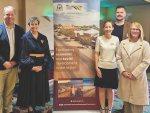
Ministerial Visit –
Hon David Michael MLA
April, 2025 | Kalgoorlie
The Minister for GoldfieldsEsperance, the Hon David Michael MLA, attended the GEDC Board meeting in Kalgoorlie-Boulder to discuss regional priorities and key projects.
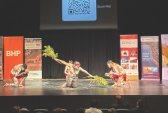
Yuwa Aboriginal Business Conference & Expo
June 2025 | Kalgoorlie-Boulder
Hosted by Goldfields Aboriginal Business Chamber (GABC), and supported by the GEDC, this event brought together industry experts, government, business community and Aboriginal business leaders, providing a platform for collaboration while showcasing Aboriginal businesses and driving new opportunities.
Ministerial VisitsState Budget for Western Australia 2025-26
June, 2025
Esperance & Kalgoorlie-Boulder
The State Government released the budget for 2025-26, including announcements for the Goldfields-Esperance region. Minister Michael and Minister Hammat joined audiences in Kalgoorlie and Esperance to provide a budget update as part of a Regional Budget Roadshow.
Australian Water Association's Regional Tour
March, 2025 | Kalgoorlie-Boulder
The Australian Water Association's (AWA) biennial regional study tour was held in Kalgoorlie-Boulder on 12-13 March 2025, to raise awareness of the importance of water to regions such as the Goldfields. The tour included visits to water infrastructure and facilities in and around the city and across mining operations. The CEO participated in several site visits and presented on the GEDC's progress of the region's Goldfields-Esperance Drought Resilience Plan, which has a strong focus on water security.
Ministerial Visit –
Hon David Michael MLA
May, 2025 | Norseman
The Minister for Goldfields-Esperance, the Hon David Michael MLA, visited Norseman for the Goldfields Voluntary Regional Organisation of Councils (GVROC) meeting, where the group discussed regional issues impacting local government.

June 2025 | Esperance
The GEDC supported the Taste of the World Esperance, a multicultural festival celebrating the diverse cultures of the community, through food, music and dance held on the WA Day long weekend. The event had 32 nationalities represented and over 2,000 attendees.
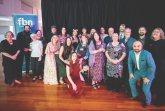
Fitzgerald Business NetworkBusiness Celebration Awards
June 2025 | Ravensthorpe
Businesses from across Ravensthorpe and Hopetoun were celebrated at this event with the GEDC supporting the Business Excellence Award. The event was one of several initiatives led by FBN and awards were presented across a range of categories.
To understand how the GEDC is performing, we invite our stakeholders to participatein ourAnnual Client Survey.
This survey provides insights into the effectiveness, timeliness and quality of service provided, and measures whether we are making a positive contribution to the economic development of the region. This year's survey was conducted by Perth Market Research, with a total of 151 surveys being completed. We thank our stakeholders for taking the time to complete the survey for 2024-25.
The highest level of service awareness was for Regional Economic Development (RED) Grants through the GEDC (83% of respondents) followed by: Maximising local content spending in the region. Economic impact modelling for regional projects. Business cases and grants by GEDC staff. Aboriginal economic development initiatives.
of stakeholders agreed that the GEDC makes a positive contribution to the economic development of the region.
90% of respondents rated the service provided by GEDC staff as 4 out of 5 or higher.*
(* on a scale of 1 to 5 averaged over 5 indicators) 80%
The highest level of service use was for facilitating partnerships and co-ordination between agencies, business, industry and organisations (43% of respondents). (meetings, workshops, projects)
This was followed by:
Provision of data and statistics relating to the GoldfieldsEsperance region. Facilitating and supporting infrastructure studies, proposals and projects. Supporting organisations with project proposals, business case development and grant applications.
The agency has placed considerable effort into attracting and retaining staff this financial year, however the ability to recruit suitably qualified and experienced people for vacancies remains challenging due to a number of factors. These include low unemployment rates, a competitive job market and housing availability.
Cybersecurity and digital transformation
As a rapidly growing and evolving space, meeting compliance requirements and minimising risk needs ongoing monitoring and resourcing. Whilst this presents a challenge for small agencies, GEDC has undertaken a number of steps to address increasing requirements, including enhanced cybersecurity measures and additional staff training.
Climate change and low carbon transition
A changing climate is likely to have variable impacts across the Goldfields-Esperance region, including a reduction in rainfall in southern areas, an increase in extreme heat days in central and northern areas and an increase in extreme weather events across the region. While this presents a number of challenges, including how communities ensure infrastructure is able to meet changing climate requirements, it also presents opportunities for the region – particularly regarding the renewable energy transition, the supply of critical minerals and development of carbon mitigation projects.
The availability and relative cost of housing remains a key barrier to economic development across the region, impeding the attraction and retention of workforce, and impacting the region's liveability.
Workforce attraction
Regionally, businesses and organisations continue to be impacted by low unemployment rates and barriers to attracting skilled workers, including housing availability and the regional cost of living. These factors, combined with a competitive jobs market, has made regional recruitment challenging for many organisations, particularly those in the not-for-profit and care sectors. Although skilled migration schemes have provided a viable option for some organisations to address workforce shortages, issues regarding key worker accommodation remain.
Changes in written law
There were no changes in any written law that affected the Agency during the reporting period.



Actualresultsversusbudgettargets
Financial targets
of services (sourced from Statement of Comprehensive Income)
equity (sourced from Statement of Financial Position)
Net increase / (decrease) in cash held (sourced from Statement of Cash Flows)
(1) As specified in the Section 40 budget estimates
(2) The variation is the difference between the Target and Actual for each line item
(a) Total cost of services is higher than the 2025 Target by $411k. This is primarily driven through expenditure on the Kalgoorlie Rail
The project carry-overs were only approved through the 2024-25 mid-year review so were not included in the Target.
(b) Net cost of services is in line with Total Cost of Services above.
(c) Total equity is in line with budget estimates (2025 Target).
(d) Grants expenditure was underspent with carry-overs to 2025-26 approved through the latest budget process.
Working Cash Targets
(e) Salary expense level is in line with 2025 Target. (1) Target to reflect the Commission's
and
(a)This variation is due to brought forward cash balance. The GEDC will utilise the cash balance for approved projects and grant payments over the forward estimates.
Under Section 14 of the Auditor GeneralAct 2006, the Auditor General dispensed with the audit of the Goldfields-Esperance Development Commission. As required by the Auditor GeneralAct 2006, the Auditor General consulted with the Treasurer prior to making this decision.




Fortheyearended30June2025
The Statement of Changes in Equity should be read in conjunction with the accompanying notes.
TheGoldfields-EsperanceDevelopmentCommission(Commission)isaWAGovernmententityandiscontrolledbytheStateofWesternAustralia,whichistheultimate parent. The Commission is a not-for-profit entity (as profit is not its principal objective).
A description of the nature of its operations and its principal activities have been included in the 'Overview' which does not form part of these financial statements.
These annual financial statements were authorised for issue by the Accountable Authority of the Commission on 31 July 2025
Statement of compliance
The financial statements aregeneral purpose financial statements which have been prepared in accordance with AustralianAccounting Standards (AAS) – Simplified Disclosures, the Conceptual Framework, and other authoritative pronouncements issued by the Australian Accounting Standards Board as modified by Treasurer’s Instructions. Some of these pronouncements are modified to vary their application and disclosure.
The Financial Management Act 2006 (the Act) and Treasurer’s Instructions, which are legislative provisions governing the preparation of financial statements for agencies, take precedence over Australian Accounting Standards Board pronouncements. Where an AASB announcement is modified and has had a significant financial effect on the reported results, details of the modification and the resulting financial effect are disclosed in the notes to the financial statements.
Basis of preparation
These financial statements are presented inAustralian dollars applying the accrual basis of accounting and using the historical cost convention. Certain balances will apply a different measurement basis (such as the fair value basis). Where this is the case the different measurement basis is disclosed in the associated note. All values are rounded to the nearest thousand dollars ($’000)
Income, expenses and assets are recognised net of the amount of goods and services tax (GST), except that the:
(a) amount of GST incurred by the Commission as a purchaser that is not recoverable from the Australian Taxation Office (ATO) is recognised as part of an asset’s cost of acquisition or as part of an item of expense; and
(b) receivables and payables are stated with the amount of GST included.
Cash flows are included in the Statement of cash flows on a gross basis. However, the GST components of cash flows arising from investing and financing activities which are recoverable from, or payable to, the ATO are classified as operating cash flows.
1. Basis of preparation (continued)
Contributed Equity
Interpretation 1038 Contributions by Owners Made to Wholly-Owned Public Sector Entities requires transfers in the nature of equity contributions, other than as a result of a restructure of administrative arrangements, as designated as contributions by owners (at the time of, or prior to, transfer) be recognised as equity contributions. Capital appropriations have been designated as contributions by owners by TI 8 - Requirement 8.1(i) and have been credited directly to Contributed Equity.
Comparative information
Except when an AAS permits or requires otherwise, comparative information is presented in respect of the previous period for all amounts reported in the financial statements. AASB 1060 provides relief from presenting comparatives for Right-of-UseAsset reconciliations.
Judgements and estimates
Judgements, estimates and assumptions are required to be made about financial information being presented.The significant judgements and estimates made in the preparation of these financial statements are disclosed in the notes where amounts affected by those judgements and/or estimates are disclosed. Estimates and associated assumptions are based on professional judgements derived from historical experience and various other factors that are believed to be reasonable under the circumstances.
Expenses incurred in the delivery of services
This section provides additional information about how the Commission's funding is applied and the accounting policies that are relevant for an understanding of the items recognised in the financial statements.The primary expenses incurred by the Commission in achieving its objectives and the relevant notes are:
Employee Benefits: include wages and salaries, accrued and paid leave entitlements and paid sick leave.
Superannuation: The amount recognised in profit or loss of the Statement of Comprehensive Income comprises employer contributions paid to the GSS (concurrent contributions), the WSS, the GESBs, or other superannuation funds.
AASB 16 Non-monetary benefits: non-monetary employee benefits, that are employee benefits expenses, predominantly relate to the provision of Vehicle and Housing benefits are measured at the cost incurred by the Commission
Provision is made for benefits accruingto employees inrespect of annual leave and longservice leavefor services rendered upto thereporting date andrecorded as an expense during the period the services are delivered.
Annual leave liabilities are classified as current as there is no right at the end of the reporting period to defer settlement for at least 12 months after the reporting period.
The provision for annual leave is calculated at the present value of expected payments to be made in relation to services provided by employees up to the reporting date.
2.1. (b) Employee related provisions (continued)
Long service leave liabilities are unconditional long service leave provisions and are classified as current liabilities as the Agency does not have the rightatthe end of the reporting period to defer settlement of the liability for at least 12 months after the reporting period.
Pre-conditional and conditional long service leave provisions are classified as non-current liabilities because the Agency has the right to defer the settlement of the liability until the employee has completed the requisite years of service.
The provision for long service leave is calculated at present value as the Commission does not expect to wholly settle the amounts within 12 months. The present value is measured taking into account the present value of expected future payments to be made in relation to services provided by employees up to the reporting date. These payments are estimated using the remuneration rate expected to apply at the time of settlement and discounted using market yields at the end of the reporting period on national government bonds with terms to maturity that match, as closely as possible, the estimated future cash outflows.
Employment on-costs involve settlements of annual and long service leave liabilities which gives rise to the payment of employment on-costs including workers’ compensation insurance.The provision is the present value of expected future payments.
Employment on-costs, including workers' compensation insurance, are not employee benefits and are recognised separately as liabilities and expenses when the employment to which they relate has occurred. Employment on-costs are included as part of 'other expenses’ Note 2.3.Error! Reference source not found. (apart from the unwinding of the discount (finance cost)) and are not included as part of the Commission's 'employee benefits expense'. The related liability is included in 'Employment on-costs provision'.
Key estimates and assumptions concerning the future are based on historical experience and various other factors that have a significant risk of causing a material adjustment to the carrying amount of assets and liabilities within the next financial year.
Severalestimates andassumptions areusedincalculatingthe Commission's long serviceleaveprovision. These include expectedfuture salary rates,discount rates, employee retention rates and expected future payments
Changes in these estimations and assumptions may impact on the carrying amount of the long service leave provision. Any gain or loss following revaluation of the present value of long service leave liabilities is recognised as employee benefits expense.
Transactions in which the Commission provides goods, services, assets (or extinguishes a liability) or labour to another party without receiving approximately equal value in return are categorised as 'Grant expenses'. Grants can either be operating or capital in nature.
Grants can be paid as general purpose grants which refer to grants that are not subject to conditions regarding their use. Alternatively, they may be paid as specific purpose grants which are paid for a particular purpose and/or have conditions attached regarding their use.
Grants and other transfers to third parties (other than contribution to owners) are recognised as an expense in the reporting period in which they are paid or payable. They include transactions such as grants, subsidies, other transfer payments made to public sector agencies, local government, non-government schools, and community groups.
(a) Support Services provided by Department of Primary Industries and Regional Development (DPIRD) to support the Commission in the fulfilment of its statutory functions and obligations under the Regional Development Commissions Act 1993. See Note 3.1 Income from State Government.
Supplies and services expenses are recognised as an expense in the reporting period in which they are incurred. The carrying amounts of any materials held for distribution are expensed when the materials are distributed.
Other operating expenses generally represent the day-to-day running costs incurred in normal operations.
How we obtain our funding
This section provides additional information about how the Commission obtains its funding and the relevant accounting policy notes that govern the recognition and measurement of this funding. The primary income received by the Commission and the relevant notes are:
Income received from other public sector entities during the period: - Department of Primary Industries and Regional Development - operational
and
Resources received from other public sector entities during the period:
- Services received free of charge (a)
(a) Support Services provided by Department of Primary Industries and Regional Development (DPIRD) to support the Commission in the fulfilment of its statutory functions and obligations under the Regional Development Commissions Act 1993. See Note 2.3 Other expenditure.
Income from other public sector agencies is recognised as income when the Commission has satisfied its performance obligations under the funding agreement. If there are no performance obligations, income will be recognised when the Commission receives the funds.
Resourcesreceivedfrom otherpublicsectorentities arerecognisedasincome (andassetsorexpenses)equivalenttothefairvalue oftheassets,orthefairvalue of those services that can be reliably determined and which would have been purchased if not donated.
TheCommission has leases for residential accommodationandvehicles.The leasecontracts are typically made for fixedperiods of1-5 years with an option torenew the lease after that date.
Initial recognition
At the commencement date of the lease, the Commission recognises right-of-use assets and a corresponding lease liability. The right-of-use assets are measured at cost comprising of:
the amount of the initial measurement of lease liability; any lease payments made at or before the commencement date less any lease incentives received; any initial direct costs; and restoration costs, including dismantling and removing the underlying asset.
The corresponding lease liabilities in relation to these right-of-use assets have been disclosed in Note 6.1.
Subsequent measurement
The cost model is applied for subsequent measurement of right-of-use assets, requiring the asset to be carried at the cost less any accumulated depreciation and accumulated impairment losses and adjusted for any re-measurement of lease liability.
Depreciation and impairment of right-of-use assets
Right-of-use assets are depreciated on a straight-line basis over the shorter of the lease team and the estimated useful lives of the underlying assets.
If ownership of the leased asset transfers to the Commission at the end of the lease term or the cost reflects the exercise of a purchase option, depreciation is calculated using the estimated useful life of the asset.
Right-of-use assets are tested for impairment when an indication of impairment is identified.
4.
(continued)
Depreciation and impairment of right-of-use assets (continued)
Non-financial assets, including items of infrastructure, plant and equipment, are tested for impairment whenever there is an indication that the asset may be impaired. Where there is an indication of impairment, the recoverable amount is estimated. Where the recoverable amount is less than the carrying amount, the asset is considered impaired and is written down to the recoverable amount and an impairment loss is recognised.
Where an asset measured at cost and is written down to its recoverable amount, an impairment loss is recognised through profit or loss
If there is an indication that there has been a reversal in impairment, the carrying amount shall be increased to its recoverable amount. However, this reversal should not increase the asset’s carrying amount above what would have been determined, net of depreciation or amortisation, if no impairment loss had been recognised in prior years
This section sets out those assets and liabilities that arose from the Commission's controlled operations and includes other assets utilised for economic benefits and liabilities incurred during normal operations:
(a) Funds transferred to Treasuryfor thepurposeof meeting the27th pay in a financial year that generally occurs every 11years. Thisaccount isclassifiedas non-current for 10out of 11 years. This account is classified as noncurrent except for the year before the 27th pay year.
Trade receivables are recognised at original invoice amount less any allowances for uncollectible amounts (i.e. impairment). The carrying amount of net trade receivables is equivalent to fair value as it is due for settlement within 30 days.
Accrued salaries account contains amounts paid annually into the Treasurer’s special purpose account. It is restricted for meeting the additional cash outflow for employee salary payments in reporting periods with 27 pay days instead of the normal 26. No interest is received on this account.
Amounts receivable for services represent the non-cash component of service appropriations. It is restricted in that it can only be used for asset replacement or payment of leave liability.
Amounts receivable for services are considered not impaired (i.e. there is no expected credit loss of the HoldingAccount).
Payables are recognised at the amounts payable when the Commission becomes obliged to make future payments as a result of a purchase of assets or services. The carrying amount is equivalent to fair value, as settlement is generally within 15-20 days.
This section sets out the material balances and disclosures associated with the financing and cash flows of the Commission.
6.1. Lease liabilities
At the commencement date of the lease, the Commission recognises lease liabilities measured at the present value of lease payments to be made over the lease term. The lease payments are discounted using the interest rate implicit in the lease. If that rate cannot be readily determined, the Commission uses the incremental borrowing rate provided by Western AustraliaTreasury Corporation.
Lease payments included by the Commission as part of the present value calculation of lease liability include: fixed payments (including in-substance fixed payments), less any lease incentives receivable; variable lease payments that depend on an index or a rate initially measured using the index or rate as at the commencement date; amounts expected to be payable by the lessee under residual value guarantees; the exercise price of purchase options (where these are reasonably certain to be exercised); payments for penalties for terminating a lease, where the lease term reflects the Commission exercising an option to terminate the lease.
The interest onthe lease liability is recognisedinprofitor loss over theleaseterm soas toproducea constant periodic rateofinterest ontheremaining balanceof the liability for each period. Lease liabilities do not include any future changes in variable lease payments (that depend on an index or rate) until they take effect, in which case the lease liability is reassessed and adjusted against the right-of-use asset.
Lease liabilities are measured by increasing the carrying amount to reflect interest on the lease liabilities; reducing the carrying amount to reflect the lease payments made; and remeasuring the carrying amount at amortised cost, subject to adjustments to reflect any reassessment or lease modifications.
For the purpose of the statement of cash flows, cash and cash equivalent (and restricted cash and cash equivalent) assets comprise cash on hand and short-term deposits with originalmaturities ofthreemonths or less that are readily convertible toa known amount ofcash andwhich are subjectto insignificant risk ofchanges in value.
There are no known capital expenditure commitments, being contracted capital expenditure additional to the amounts reported in the financial statements (2024: Nil).
7. Financial instruments and Contingencies
The carrying amounts of each of the following categories of financial assets and financial liabilities at the end of the reporting period are:
(a) The amount of financial assets at amortised cost excludes GSTrecoverable from theATO(statutory receivable).
(b) The amount of financial liabilities at amortised cost excludes GST payable to theATO (statutory payable).
Contingent assets and contingent liabilities are not recognised in the statement of financial position but are disclosed and, if quantifiable, are measured at the best estimate inclusive of GST receivable or payable respectively.
There were no contingent assets or contingent liabilities which would affect the Commission at the end of June 2025 (2024: None).
This section includes additional material disclosures required by accounting standards or other pronouncements, for the understanding of this financial report.
8.1. Events occurring after the end of the reporting period
There were no events occurring after the reporting period date that impact on the financial statements.
Key management personnel
The Commission has determined key management personnel to include the members of the accountable authority, senior officers of the Commission and cabinet ministers that the Commission assists. The Commission does not incur expenditures to compensate Ministers and those disclosures may be found in the Annual Report on State Finances
The totalfees, salaries,superannuation, non-monetary benefits and other benefits for members of theaccountable authority andsenior officers of theCommissionfor the reporting period are presented within the following bands:
8.2 Key management personnel (continued)
Total compensation for members of the accountable authority and senior officers
Total compensation includes the superannuation expense incurred by the Commission in respect of senior officers.
8.3. Related party transactions
The Commission is a wholly owned and controlled entity of the State of Western Australia. Related parties of the Commission include: all cabinet ministers and their close family members, and their controlled or jointly controlled entities; all senior officers and their close family members, and their controlled or jointly controlled entities; otheragenciesandstatutoryauthorities,includingrelatedbodies,thatareincludedinthewholeofgovernmentconsolidatedfinancialstatements(i.e.wholly-owned public sector entities); associates and joint ventures, of a wholly-owned public sector entity; and the Government Employees Superannuation Board (GESB).
Material transactions with other related entities
Outside of normal citizen type transactions with the Commission there were no other related party transactions that involved key management personnel and/or their close family members and/or their controlled (or jointly controlled) entities.
8.4. Related bodies
The Commission had no related bodies during the reporting period.
8.5. Affiliated bodies
The Commission had no affiliated bodies during the reporting period.
8.6. Special purpose accounts
The Commission had no special purpose accounts during the reporting period
8.7. Remuneration of auditors
Remuneration paid or payable to the Auditor General in respect of the audit for the current financial year is $nil (2024: $35,000).The Auditor General has dispensed with the audit for the year ended 30 June 2025 under section 14 of the Auditor General Act 2006.
8.8. Supplementary financial information
(a) Write-offs
There were no write-offs during the financial year.
8.8. Supplementary financial information (continued)
(b) Losses through theft, defaults and other causes
There were no losses of public money and public and other property during the financial year.
(c) Gift of public property
There were no gifts of public property during the financial year.
8.9. Explanatory statement
The Commission is exempt from preparing an Explanatory Statement as required under TI 3 Financial Sustainability (7) – Explanatory Statement as their Total Cost of Services is below $10 million for the two most recent consecutive comparative periods.
Each year the GEDC is measured in its performance against two key performance indicators – one effectiveness and one efficiency indicator. These indicators are established through the Government's Outcomes Based Management Framework, prior to the commencement of the financial year, and relate to the GEDC's prescribed Government Goals, Desired Outcomes and Service.
To evaluate our performance in providing a regional development service to promote economic development and sustainable regional communities, the GEDC utilises performance indicators that are measured on an annual basis.
The GEDC measures its effectiveness through an Annual Client Perceptions Survey, conducted by an independent market research company. To help determine if the desired outcomes have been achieved, participants are asked to rate their satisfaction with the GEDC making a positive contribution to the economic development of the region. The effectiveness indicator and actual result, as measured through the 2024-25 Client Perception Survey, is provided below:
To measure the relationship between services delivered and resources used, the GEDC's performance is also measured on the average cost per hour to promote economic development and sustainable regional communities.
The efficiency target and actual result, calculate on the hours worked by GEDC during 2024-25, is provided below:
cost per hour to promote economic development and sustainable regional communities.
Fortheyearended30June2025
We herebycertify that the keyperformance indicatorsarebased on properrecords,are relevantandappropriatefor assisting usersto assess the Goldfields-Esperance Development Commission’s performance, and fairly represent the performance of the GoldfieldsEsperance Development Commission for thefinancial year ended 30 June 2025.

Terrence Winner Chair
31 July 2025

Kris Starcevich Chief Executive Officer
31 July 2025
Fortheyearended30June2025
DetailedinformationinsupportofKeyPerformanceIndicators
Relationship to Government Goals
The role of the Commission is to promote social and economic development in the Goldfields-Esperance region and to contribute towards the Government's goals for Western Australia.
Our desired outcome is to encourage and promote opportunities to build, increase investment, attract, and to retain population in the Goldfields-Esperance region.
Performance measures are defined and monitored for the Commission's strategic goals through the Western Australian Government Budget Statements.
Government Goal
Diversifying the WA economy, creating local jobs for the future.
Supporting our local regional communities to thrive.
Encourage and promote opportunities to increase investment, attract and retain population, and grow the economy of the Goldfields-Esperance region.
Regional Development
Key Effectiveness Indicators
The key effectiveness indicator measures the extent to which performance contributes to improved client satisfaction.
The Commission’s effectiveness in achieving its government desired outcome is measured by undertaking an annual survey of key clients and stakeholders. This survey is conducted by an independent market research consultant. 308 stakeholders were selected at random from the list of identified stakeholders, comprising of Local, State and Commonwealth agencies, as well as private entities and non-government agencies. A total of 151 completed surveys were obtained from this client contract list (a response rate of 49%) which is sufficient to ensure that the overall results are representative of the opinions of the population of key clients within a possible sampling error of +/- 5.7% at the 95% confidence level.
Although the response rate was less than 50%, the Commission believes that the responses fairly present a broad range of clients and stakeholders.
The primary objective of the research was to obtain information from clients and stakeholders to provide a measure as to whether the Commission has met its primary goal, around "Client satisfaction with the provision of an environment conducive to the balanced economic and social development of the Goldfields-Esperance region".
Fortheyearended30June2025
The GEDC will continue to work towards maintaining these effectiveness targets in future years. Prior years are summarised in the following table.
Client satisfaction with the provision of an environment conducive to the balanced economic and social development of the Goldfields-Esperance region.
The key efficiency indicator measures the overall efficiency in achieving the desired outcome and is based on the average cost per hour.
Service – Regional Development for the Commission
Service Description: to promote economic development and sustainable regional communities.
Comments
The total hours worked were 19% under target and total cost of services (excluding grants) was 13% over target reflecting a 46% increase in what the Commission delivered with fewer resources. This was mainly as a result of the Kalgoorlie Rail Realignment Project and the Regional Drought Resilience Program which are not reflected in the target numbers. If these programs are excluded, then the actual average cost per hour would have been $153 which is in line with target.
Section 25 (2) of the Regional Development CommissionAct 1993 requires that the text of any written direction from the Minister is to be recorded in the Annual Report.
Nil Ministerial Directives were received by the Commission during the financial year.
The Commission did not complete or commence any capital works projects during 2024-25.
The CEO is the only employee of the Commission. Resources, including staff, are provided by DPIRD free of charge under a Service Level Agreement and Partnership Framework, to enable the Commission to meet its legislative and operational requirements.
There have been no workers' compensation claims during the reporting period for GEDC employees. Workers' compensation claims for DPIRD employees working for the GEDC are reported through the DPIRD Annual Report.
At 30 June 2025, the GEDC had one employee, with an allocation of 12.2 full time equivalent (FTEs) employed by DPIRD and provided to the GEDC free of charge. Of the GEDC and DPIRD employees working at the Commission 85% are female and 15% are male.
*Inclusive of GEDC and DPIRD employees
**Denotes two part-time employees on a 0.6 FTE basis
The GEDC is committed to professional development opportunities for its Board and staff. New Board members and staff participate in an induction process and complete online training modules provided by the GEDC, DPIRD and the PSC. Training and development plans are developed with staff and reviewed regularly to meet changing needs throughout the year.
During this reporting period, Board members and staff participated in various, online, external and in-house training. Staff development workshops, presentations and planning sessions were also held at quarterly staff meetings in late November 2024 and June 2025.
Shares inAnother Body
The Goldfields-Esperance Development Commission does not have shares in another body.
Insurance Premiums Paid to Indemnify Members of the Board
In March 2025, paid $6,282.32 (inc GST) was paid via Marsh Pty Ltd. to indemnify all Board Members against liability incurred under Section 13 or 14 of the Statutory Corporation (Liability a of Directors)Act 1996
Senior Officers Interests
During the reporting period, the GEDC did not incur expenditure with an entity in which a senior officer is also a Director, Partner or member of the Executive.
Annual Estimates 2025-26
The Goldfields-Esperance Development Commission is not separately identifiable in the WA State Government annual estimates as it is aggregated together with the Department of Primary Industries and Regional Development and the eight other Regional Development Commissions in Division 15.
Section 40 of the Financial ManagementAct 2006 requires that each statutory authority whose financial aggregates are not separately identifiable in a single Division of the Consolidated Account Expenditure Estimates prepare annual estimates unless otherwise directed in writing by the Treasurer. Agencies described in the Treasurer's Direction under Section 40(1) of the Financial ManagementAct 2006 are exempt from preparing draft annual estimates.
Therefore, as the Commission is a statutory authority whose Total Cost of Services is less than ten million dollars for the two most recent consecutive comparative periods as reported in the tabled annual report, the Commission is exempt. The following annual estimates for 2025-26 were approved by the Chairperson, Chief Executive Officer and Chief Financial Officer, and noted by Minister Dawson MLC.
(DEFICIT)
Note: The presentation above has been amended so that the services received free of charge are classified by nature of expense rather than a separate line item.
Expenditure onAdvertising, Market Research, Polling and Direct Mail
In compliance with Section 175ZE of the ElectoralAct 1907, the Commission monitors expenditure incurred in relation to advertising agencies, market research, polling, direct mail and media advertising. The Commission incurred a total expenditure of $8740.98 for 2024-25. Expenditure was incurred in the following areas:
Acts of Grace
The Commission did not make any Acts of Grace payments in the reporting period.
Unauthorised Use of Credit Card
There was no unauthorised use or personal expenditure recorded this financial year.
Compliance with Public Sector Standards and Ethical Codes
The GEDC has had no compliance issues raised during this financial year as required by the Public Sector Standards, the WA Code of Ethics or the internal Code of Conduct. The Commission continues to review and update internal policies to ensure compliance with Public Sector Commission updates. All new Board and staff members undertake integrity training as part of their induction, and compliance is monitored through the GEDC's Risk Management and Audit Committee. Work will commence in 2025 to plan for the next review of the Record Keeping Plan due in 2026.
The State RecordsAct 2000 requires the GEDC to have a record keeping plan and to comment in the Annual Report on compliance with the plan. The GEDC Record Keeping Plan was approved by the State Records Commission on 26 March 2021. In accordance with Section 28 of the State RecordsAct 2000 , the record keeping plan is to be reviewed within five years of its approval date. A report of the review must be submitted to the State Records Office by March 2026. The Commission staff are aware of their record keeping responsibilities and receive induction and ongoing training in relation to the agency's record keeping policies, practices and procedures.
The Department of Primary Industries and Regional Development was selected and reviewed as part of the Public Sector Commission led Agency Capability Review Program. The GEDC will work closely with the Department to ensure key observations are met in relation to any DPIRD resources received free of charge.
The GEDC is committed to a diverse and inclusive workplace, as research shows agencies that value diversity and inclusion achieve greater staff satisfaction, better customer service outcomes and improved decision making. The workforce is more connected, motivated, and productive. GEDC works closely with DPIRD to implement workforce inclusiveness requirements.
The GEDC is committed to promoting an inclusive environment in which all people can access our services and facilities. The DPIRD Access and Inclusion Plan 2024-29 is the current DAIP for the GEDC.
In accordance with the Disability ServicesAct 1993 and Schedule 3 of the Disability Services Regulations 2004 the GEDC continues to implement strategies and initiatives that achieve seven access and inclusion outcomes identified and outlined below:
Ÿ People with disability have the same opportunities as other people to access the services of, and any events organised by the GEDC.
Ÿ People with disability have the same opportunities as other people to access the offices and other facilities of the GEDC.
Ÿ People with disability can request to receive information from the GEDC in a format that will enable them to access the information as readily as other people are able to access it.
Ÿ People with disability receive the same level and quality of service from the staff of the GEDC as other people receive.
Ÿ People with disability have the same opportunities as other people to make complaints to the GEDC.
Ÿ People with disability have the same opportunities as other people to participate in public consultation by the GEDC.
Ÿ People with disability have the same opportunities as other people to obtain and maintain employment with the GEDC.
The Department of Primary Industries and Regional Development (DPIRD) launched the new Disability Access and Inclusion Plan on 30 July 2024.
The DPIRD access and inclusion plan 2024-29 reflects the department and nine Regional Development Commissions' commitment to ensuring equal access to services, information and facilities and promote inclusive and diverse workplaces.
This plan supports our obligations under the Equal OpportunityAct 1984, the Disability DiscriminationAct 1992, the Carers RecognitionAct 2004 and the United Nations Convention on the Rights of Persons with Disability.
A copy of the DPIRD Disability Access and Inclusion Plan can be found on the GEDC website.
DPIRD Access and Inclusion Plan2024 2029 - Goldfields-Esperance Development Commission (GEDC)
During the reporting period, the Board met on seven occasions which included one out-of-session meeting. The Risk Management and Audit Committee (RMAC) met on three occasions.
The GEDC acknowledges its direct and shared responsibilities with DPIRD under the Work Health and Safety Act 2020. The CEO is the only employee of the GEDC and is not trained in WHS and injury management responsibilities. Staff provided by DPIRD are trained in WHS enabling a formal mechanism of consultation for WHS matters. The Commission provides staff with guidance on safe work practices and all staff are required to comply with DPIRD and GEDC WHS policies and procedures.
Employees are required to conduct themselves in a safe manner, not placing themselves or others at risk. Contractors working on site are also required to conduct their activities in a manner that ensures the safety, health and welfare of others. The Commission ensures its safety equipment is serviced as advised by the manufacturer or as advised by DPIRD WHS. Officers undertake regular office inspections. The GEDC has received zero provisional improvement notices. The GEDC is committed to consulting with Board members and staff on WHS matters including:
Ÿ A strong focus on WHS policy and procedures and hazard identification / incident reporting procedures during induction.
Ÿ WHS Committee meetings listing any hazards reported, communication of WHS directives and site reviews.
Ÿ WHS standing agenda item of Board meetings, RMAC meetings, quarterly staff meetings and regularly discussed at weekly team meetings during a 'Health and Safety Moment'.
of injured workers returned to work (i) within 13 weeks
Percentage of injured workers returned to work (ii) within 26 weeks
Percentage of managers trained in work health and safety injury management responsibilities, including refresher training within 3 years
than or equal to 80%
The GEDC is included in the DPIRD Multicultural Plan 2021-26 and is committed to providing goods, services, facilities and employment opportunities that meet the different needs and aspirations of the Culturally and Linguistically Diverse (CaLD) communities of the region. The DPIRD Multicultural Plan 2021–26 sets outcomes and strategies in which the GEDC will work to achieve the policy priorities:
Ÿ Harmonious and inclusive communities.
Ÿ Culturally responsive policies, programs and services.
Ÿ Economic, social, cultural, civic and political participation.
The GEDC supported cultural diversity in our workplace and communities this year by acknowledging and celebrating community multicultural events including International Women's Day, Reconciliation Week, NAIDOC Week, Multicultural Festival and Harmony Day.
During the reporting period the GEDC, through funding, facilitation or in other ways participated in several events and programs that promoted cultural awareness, employment, training or business opportunities for CaLD communities. This included sponsorship for the Taste of The World Festival in Esperance.
The Chief Executive Officer is the only employee of the Commission. Resources are provided by DPIRD to enable the Commission to meet its legislative objectives. As such the current number of managers employed by the Commission who are trained in WHS and injury management is nil.
A local DPIRD WHS Committee is operational at both the Kalgoorlie-Boulder and DPIRD Esperance office. The Committee runs independent meetings, identifying any hazards reported, communicating of WHS directives and site reviews. The minutes from these meetings are presented at GEDC Board meetings, uploaded to DPIRDs record management system and reported into the DPIRD Strategic WHS meeting.
Substantive equality recognises that while some systems and processes may outwardly appear as non-discriminatory, they may not be fully responsive to the needs and aspirations of different people and groups and, as a result, can unintentionally create further inequalities. GEDC is committed to identifying and eliminating institutional barriers wherever they exist.
Strategic Plan forAsbestosAwareness and Management 2019-2023
The National Strategic Plan for Asbestos Awareness and Management 20192023 is consistent with the Western Australian Government policy on Occupational Safety and Health. Each State and local government department, agency, authority and government enterprise is required to report on its progress in achieving Western Australia's targets to the Department of Energy, Mines, Industry Regulation and Safety. The Department of Primary Industries and Regional Development reported on behalf of the GEDC.
Round 7 of the State Government's Regional Economic Development (RED) Grants supported six successful Goldfields-Esperance projects with total funding of $1,050,000.
To date the RED Grants Program has invested in 32 projects in the Goldfields-Esperance region, with total funding of $4.8 million. These projects have contributed to the economic and social development of the region by unlocking potential of many local organisations and businesses over the past seven years.
Grant projects from Rounds 1 and 2 have been completed and fully acquitted.
The GEDC supported the following strategic community and economic initiatives during 2024-25.
Commenced: 2021-22
Business Case Development for James Street Precinct Shire of Esperance $40,000 Acquitted Esperance Housing, Land and Accommodation Project Shire of Esperance $40,000 Acquitted
Commenced: 2022-23
Regional Tourism Conference Promotional Brochure
Golden Outback $10,000 Acquitted
Commenced: 2023-24 GIHO Development of Employment and Training Project / Program
KBCCI Commerce Hub Kalgoorlie-Boulder Chamber of Commerce and Industry $20,000 Acquitted
Phase One: WA Museum of the Goldfields Redevelopment Project
In Progress Kalgoorlie-Boulder Investment Prospectus
of Kalgoorlie-Boulder
Acquitted
Esperance Business and Industry Events (Converge Esperance) Esperance Chamber of Commerce and Industry
Business and Employment Support Services for Ravensthorpe and Hopetoun Communities
Accommodation Needs Analysis
Economic Development Strategy
Ravensthorpe Leadership Initiative (ERLI) Esperance Chamber of Commerce and Industry $15,000 Acquitted
Hopetoun Foreshore Precinct Masterplanning Shire of Ravensthorpe
In Progress
of Esperance
(Aboriginal Corporation) RNTBC
Esperance Tourism Data Dashboard
In Progress
In
Esperance Brand Implementation Project Australia's Golden Outback
Acquitted Northern Goldfields Economic Prospectus Shire of Leonora $50,000 In Progress
Esperance NAIDOC Week Events 2024 Esperance Tjaltjraak Native Title Aboriginal Corporation $5,000 Acquitted
Activ8 Kalgoorlie CBD Project Kalgoorlie-Boulder Chamber of Commerce and Industry (KBCCI) $10,000 In Progress
Ravensthorpe and Hopetoun Business & Employment Support Package Fitzgerald Business Network Inc $15,000 In Progress
Arts and Culture Summit Kalgoorlie-Boulder Travel Bursaries Gathering
and Culture Goldfields Association t/a Artgold
In Progress Wiluna Townsite Development Masterplan Shire of Wiluna $30,000 In Progress
Commenced: 2024-25 AACHWA Our Business Forum Aboriginal Art Centre Hub Western Australia (AACHWA)
Acquitted Esperance Workers Accommodation Business Case 24-25 Shire of Esperance $5,000 In Progress ECCI Activ8 Esperance Project Esperance Chamber of Commerce and Industry
In Progress Seaview Village Business Case Shire of Ravensthorpe $20,000 In Progress
Acronym Name
AED Aboriginal Economic Development
CKB City of Kalgoorlie-Boulder
CRC Community Resource Centre
DAIP Disability Access and Inclusion Plan
DEMIRS Department of Energy, Mines, Industry Regulation and Safety
DITRDCA Department of Infrastructure, Transport, Regional Development, Communications and the Arts
DJTSI Department of Jobs, Tourism, Science and Innovation
DLG District Leadership Group
DPIRD Department Primary Industries and Regional Development
DoC Department of Communities
DoF Department of Finance
DoT Department of Transport
DPLH Department of Planning, Lands and Heritage
DTWD Department of Training and Workforce Development
ECCI Esperance Chamber of Commerce and Industry
ETNTAC Esperance Tjaltjraak Native Title Aboriginal Corporation
Acronym Name
FBN Fitzgerald Business Network
GABC Goldfields Aboriginal Business Chamber
GROH Government Regional Officers' Housing
GTE Government Training Enterprise
GVROC Goldfields Voluntary Regional Organisation of Councils
IPAA Institute of Public Administration Australia
IWD International Women's Day
KBCCI Kalgoorlie-Boulder Chamber of Commerce and Industry
KPI / KEI Key Performance Indicators / Key Efficiency Indicators
LCA
LGA
Local Content Adviser
Local Government Authority
NNSIDI Northern Native Seed Industry Development Initiative
OAG Office of Auditor General
OSH Occupational Health and Safety
PBC Prescribed Body Corporate
PRIS Privacy and Responsible Information Sharing
Acronym Name
PSC Public Sector Commission
PTA Public Transport Authority
RDAGE Regional Development Australia Goldfields-Esperance
RDC Regional Development Commission
RDCo Regional Development Council
RDRP Regional Drought Resilience Plan
RED Regional Economic Development (Grant)
RHFF Ravensthorpe and Hopetoun Future Fund
RMAC Risk Management and Audit Committee
SLA Service Level Agreement
SME Small to Medium-sized (Business) Enterprise
TAC Tjiwarl Aboriginal Corporation
WALGA WA Local Government Association
WARDA Western Australian Regional Development Alliance
WDTT What's Down The Track
WHS Work Health Safety

Kalgoorlie-Boulder O�ce
Viskovich House
377 Hannan Street
Kalgoorlie WA 6430 (08) 9080 5000
Esperance O�ce
Suite 26c Dutton Arcade
91 Dempster Street
Esperance WA 6450 (08) 9083 2200
info@gedc.wa.gov.au gedc.wa.gov.au
Goldfields-Esperance Development Commission @GoldfieldsEsperanceDevelopmentCommission